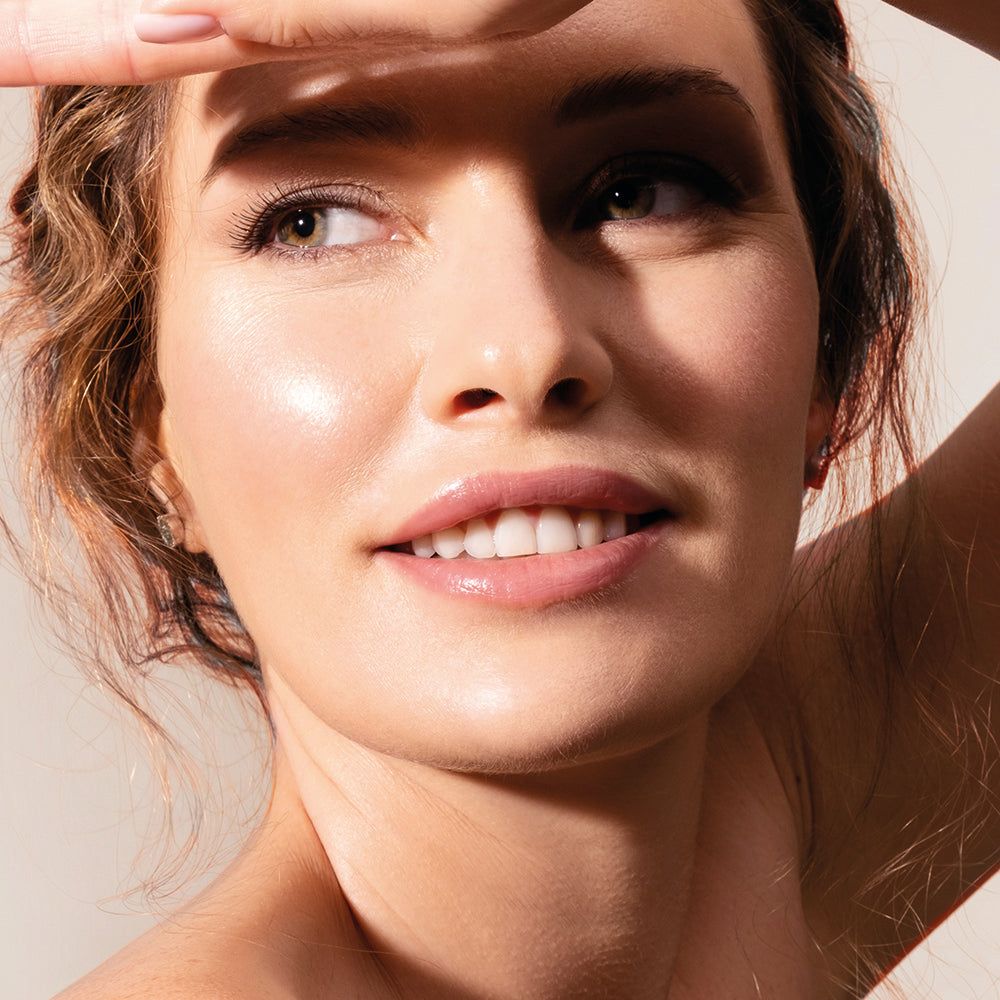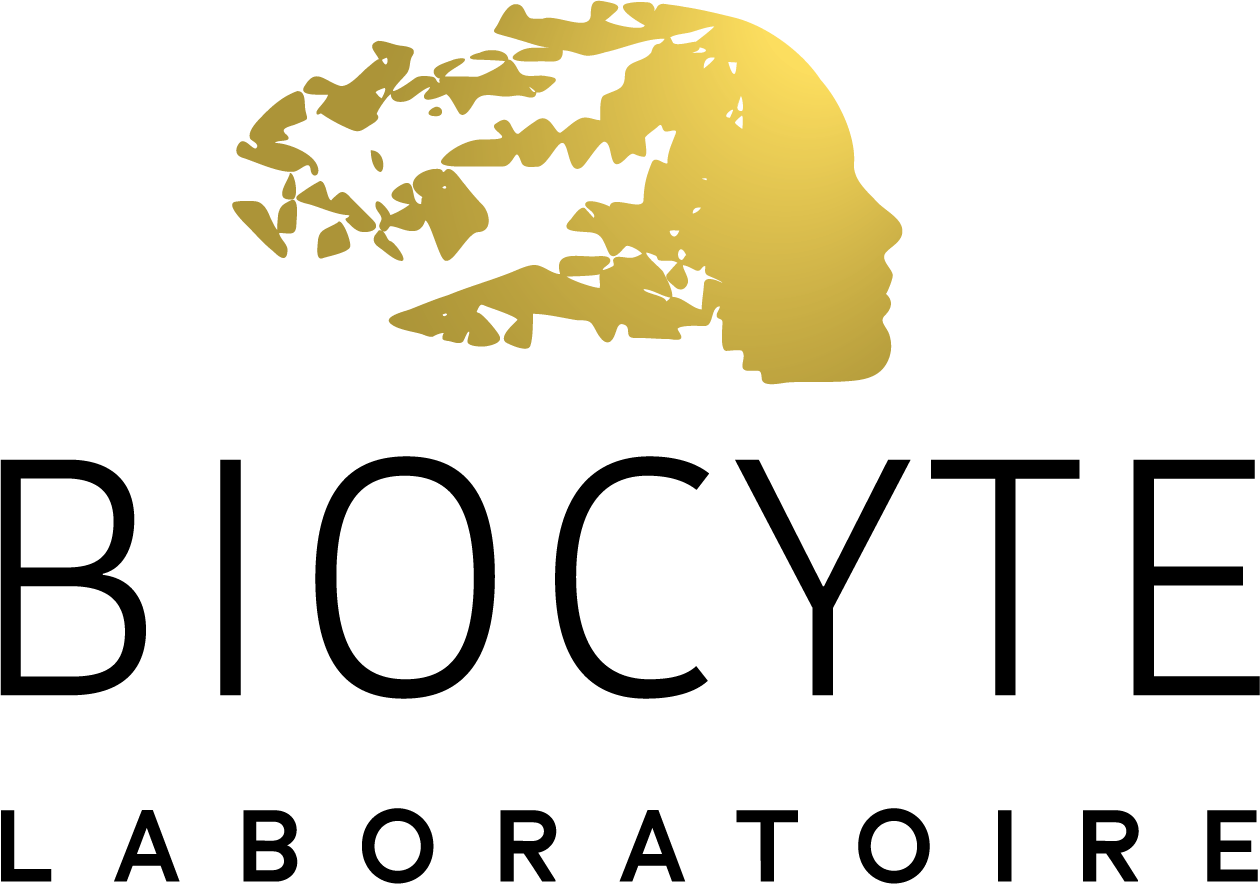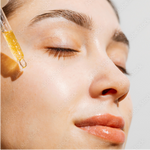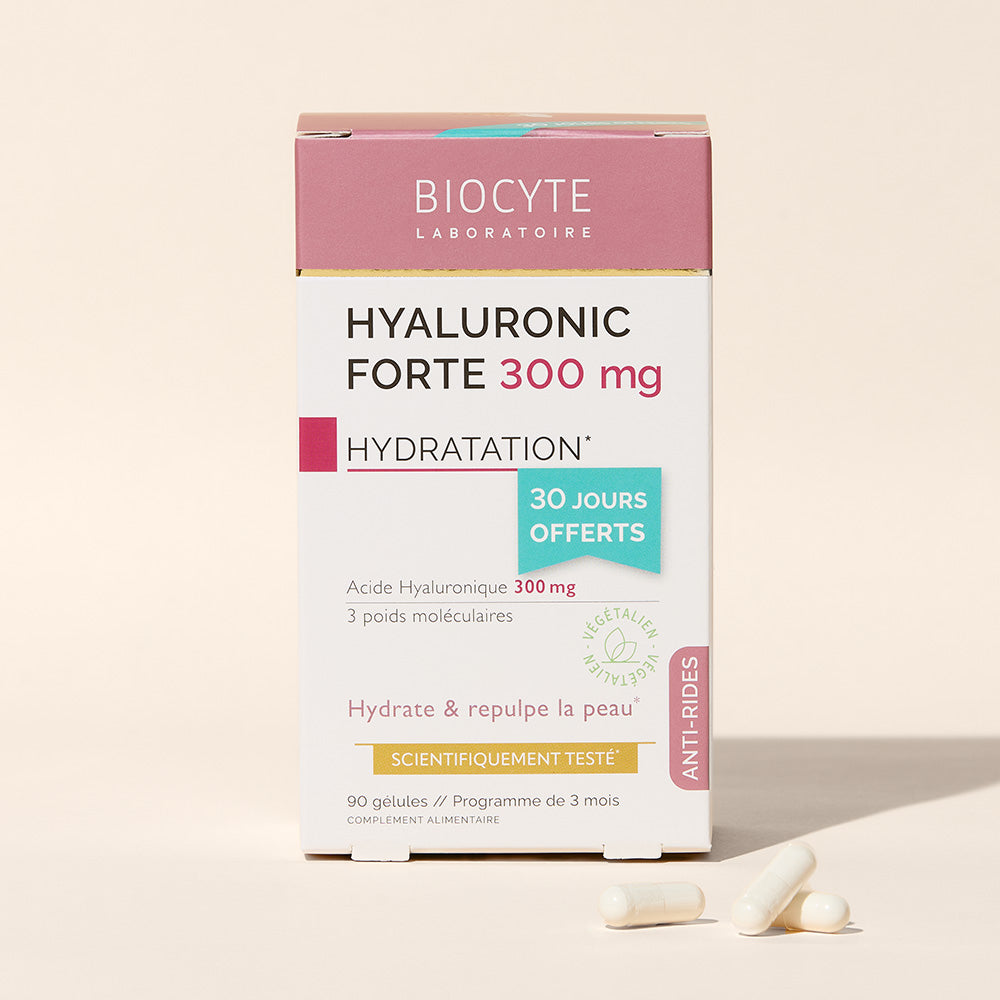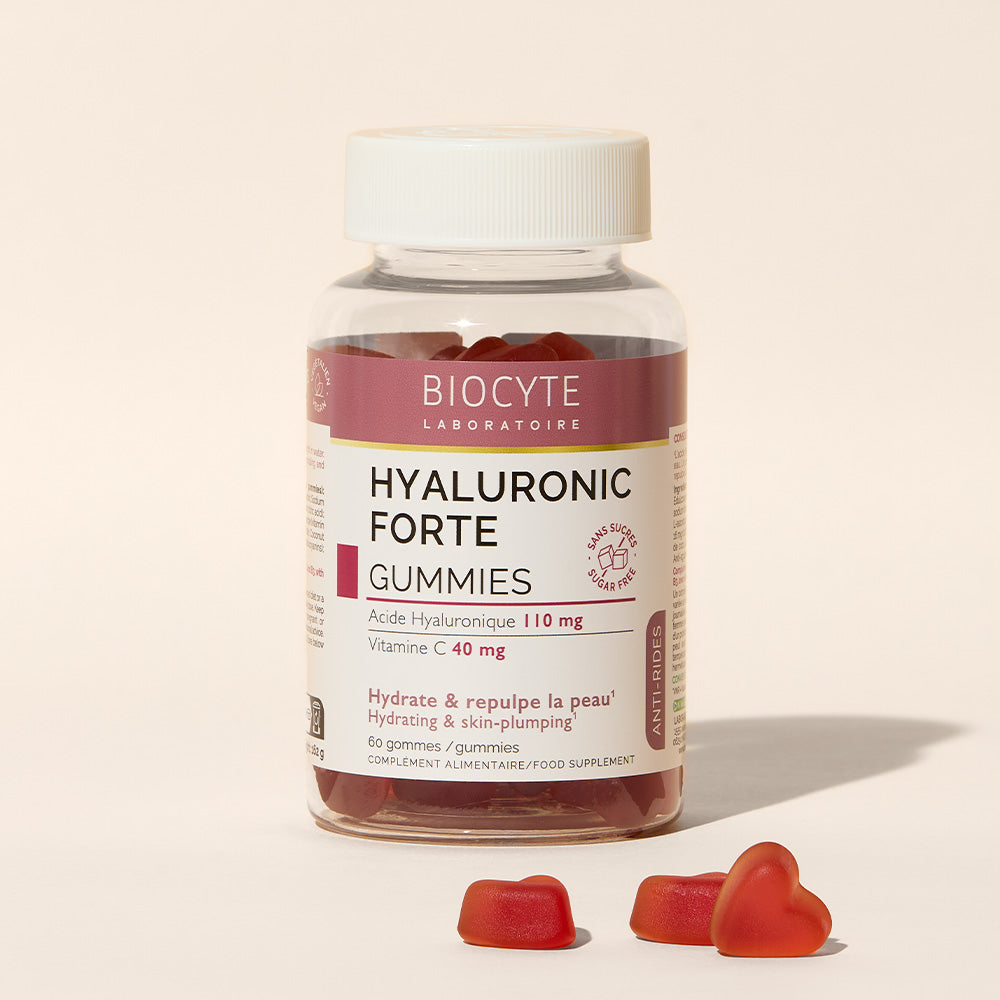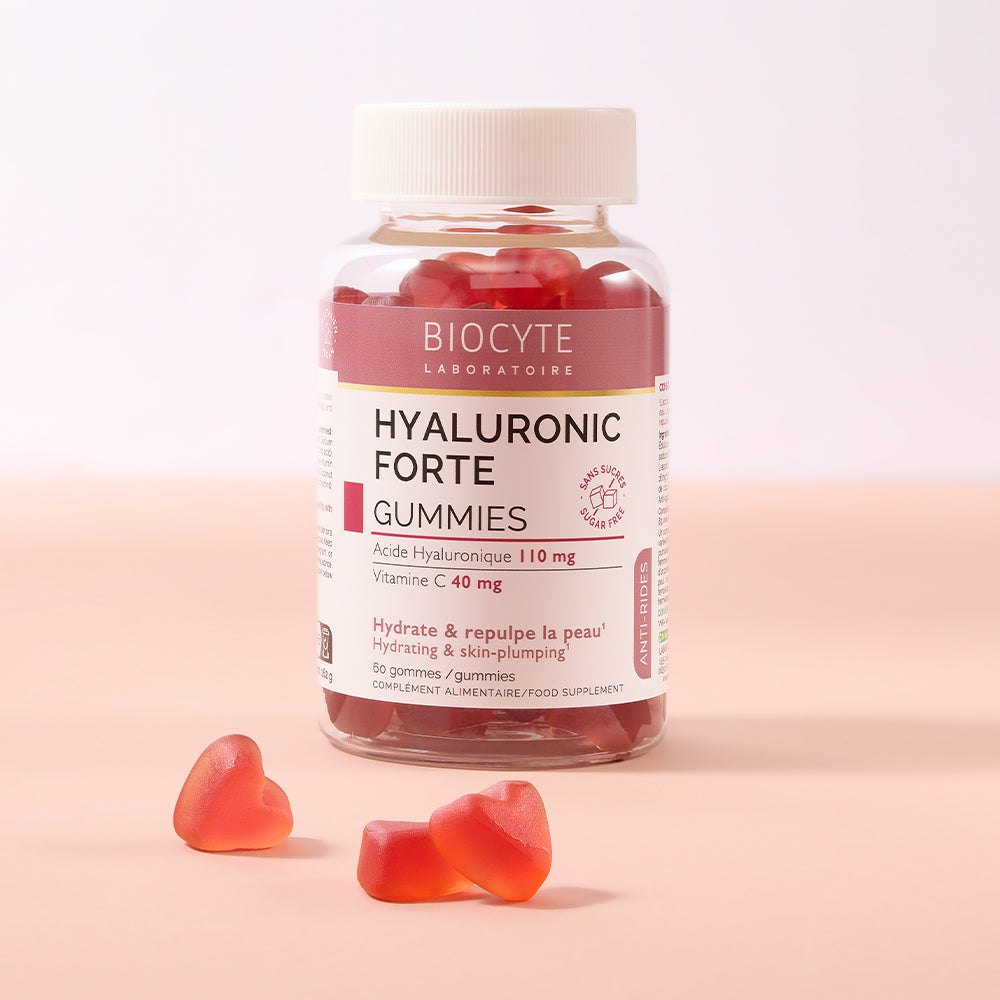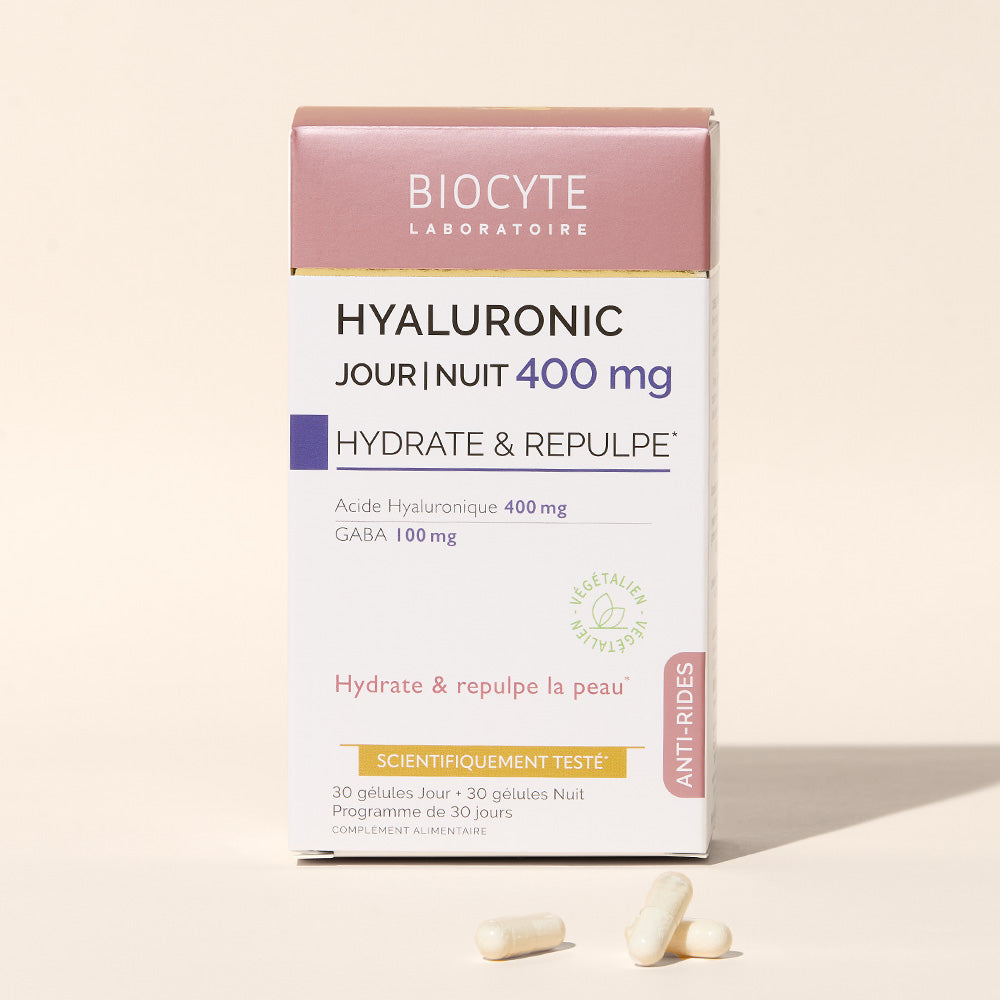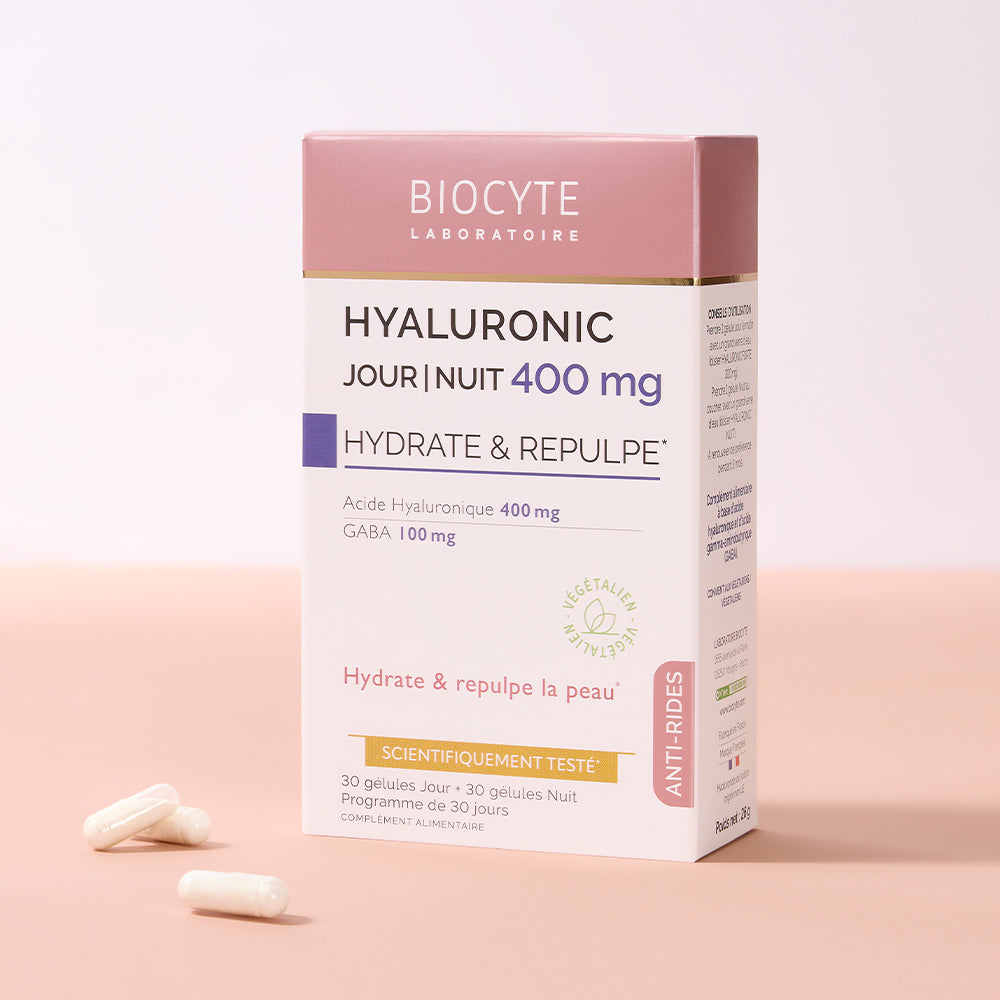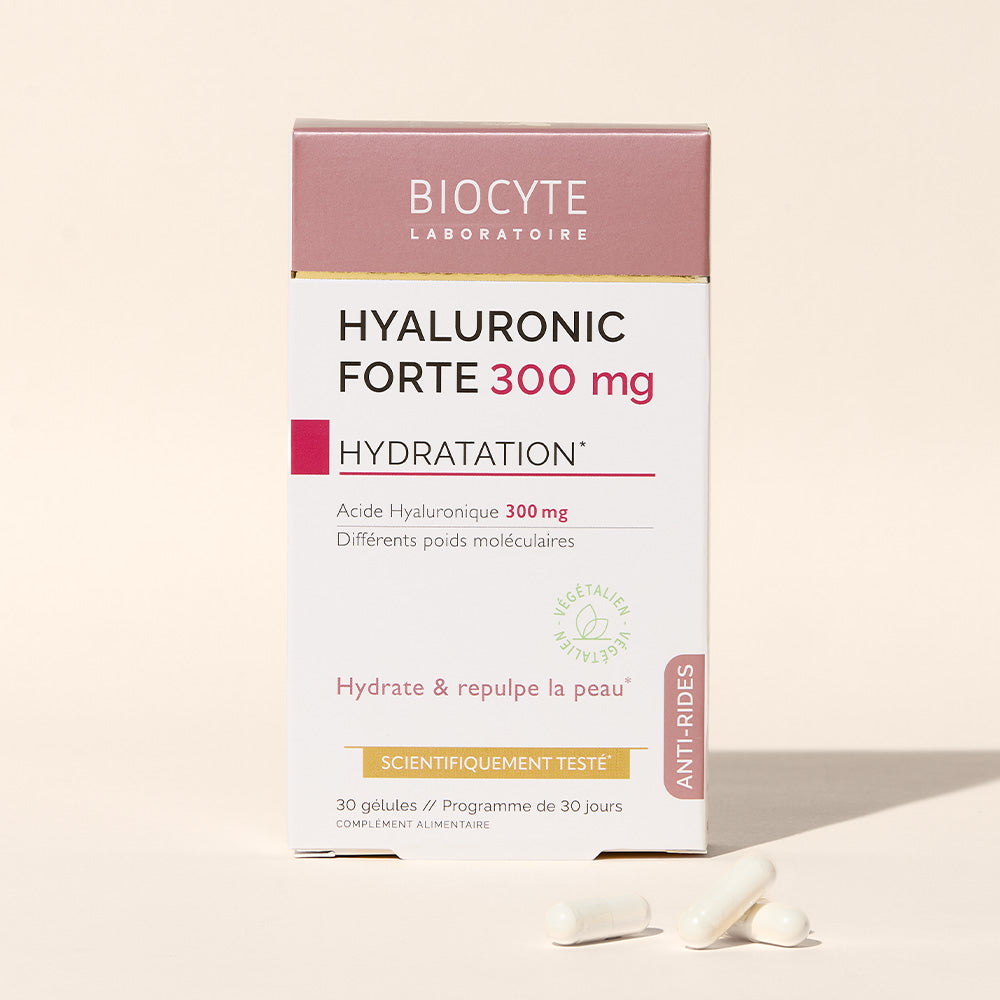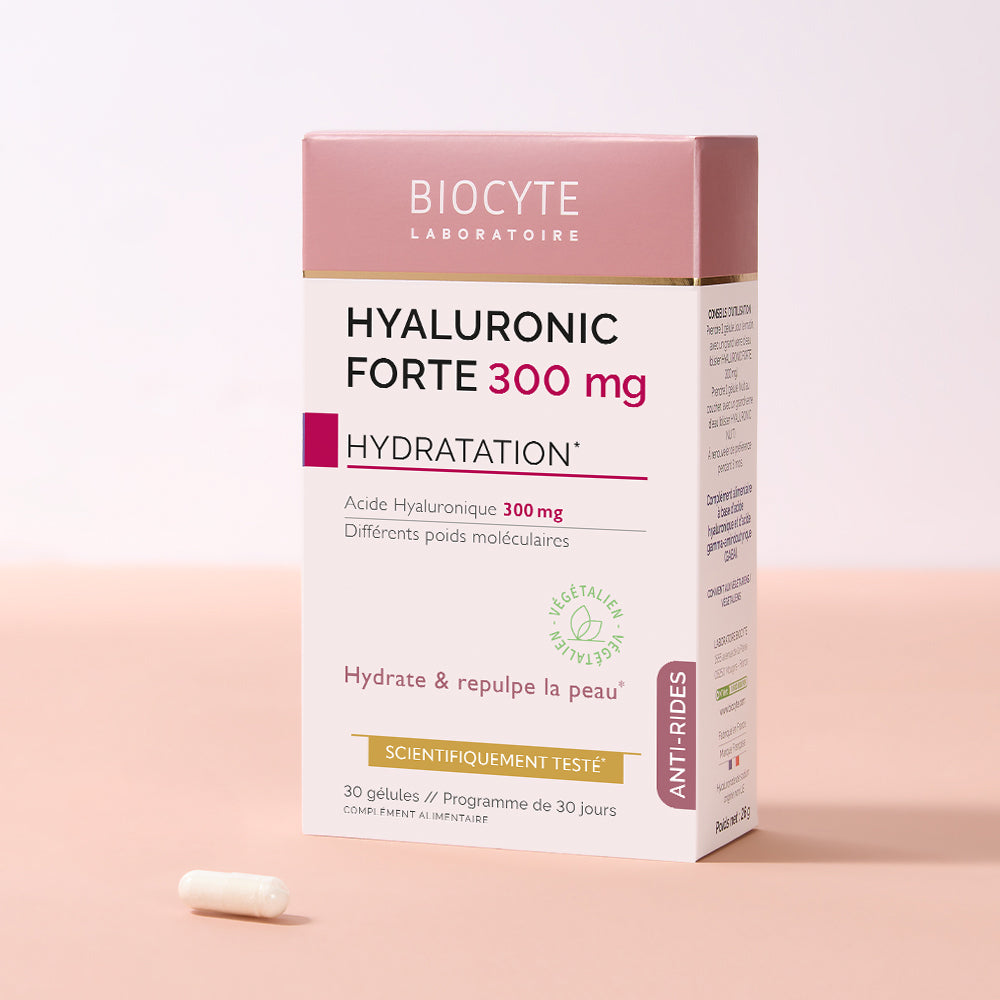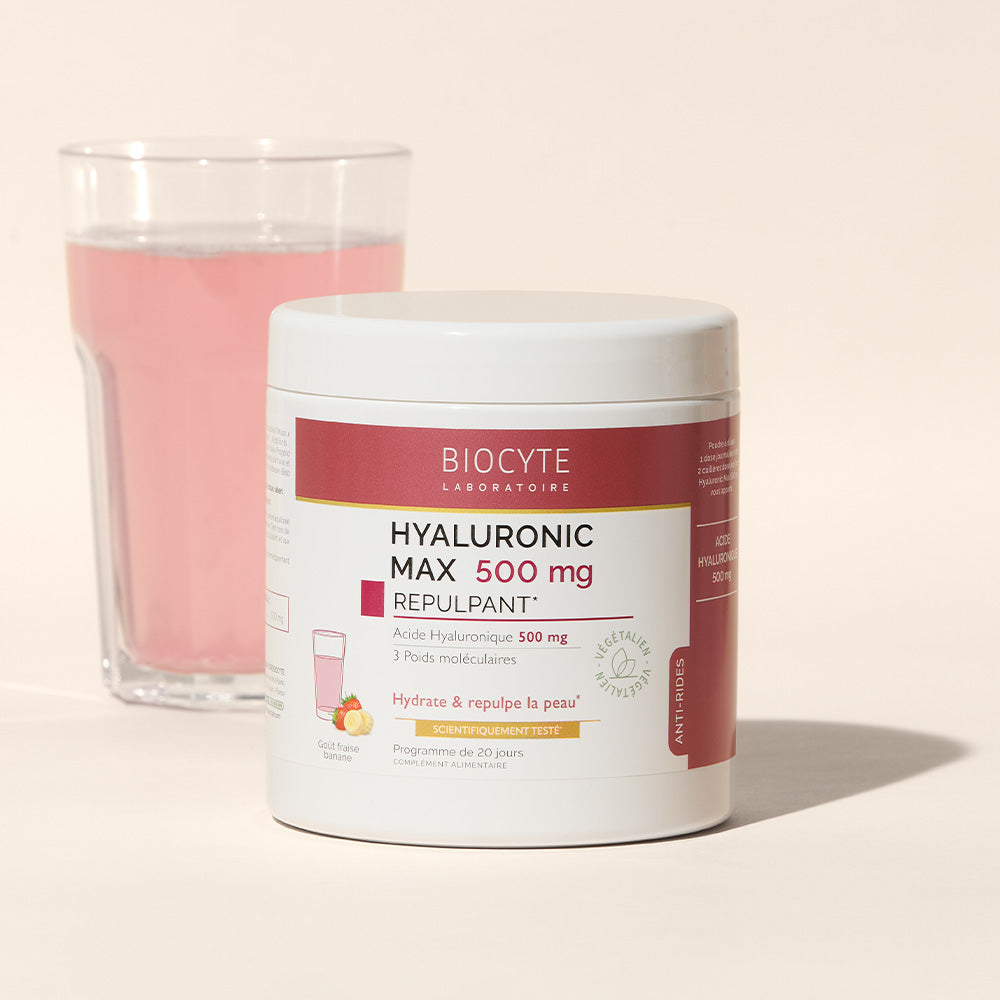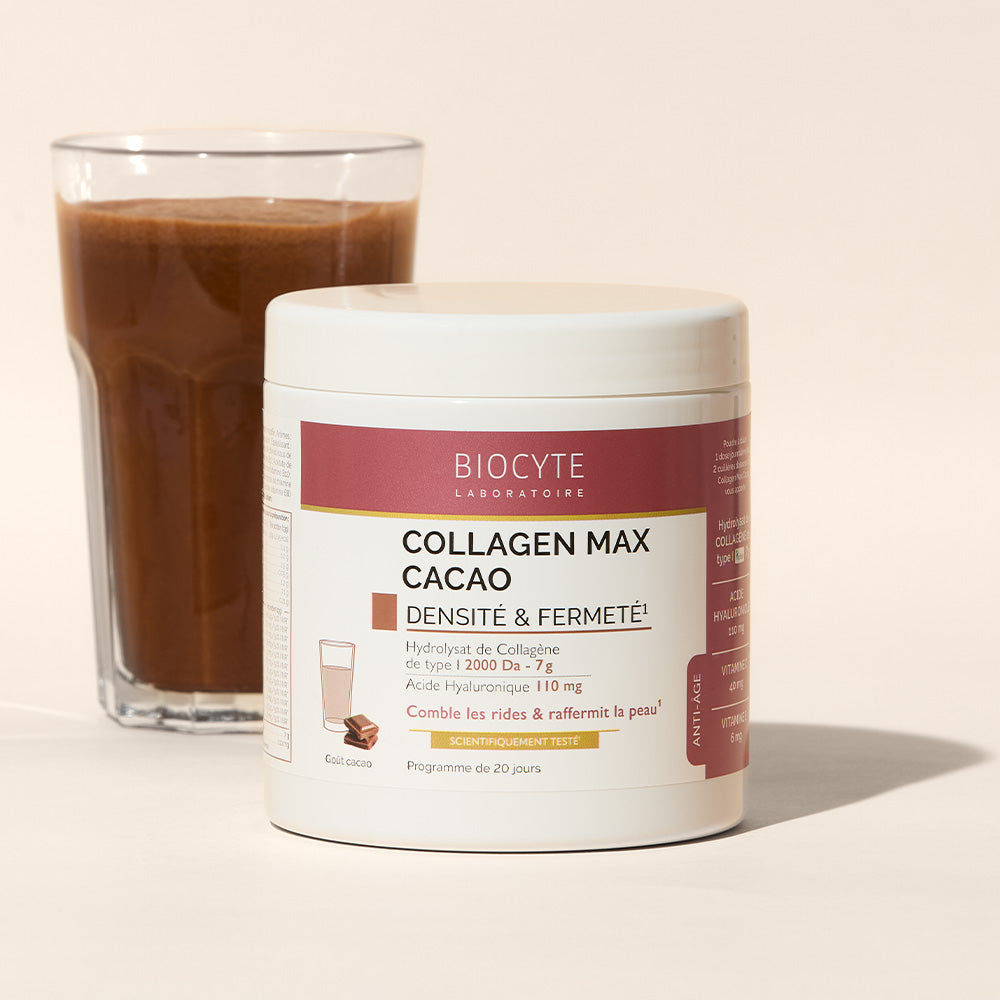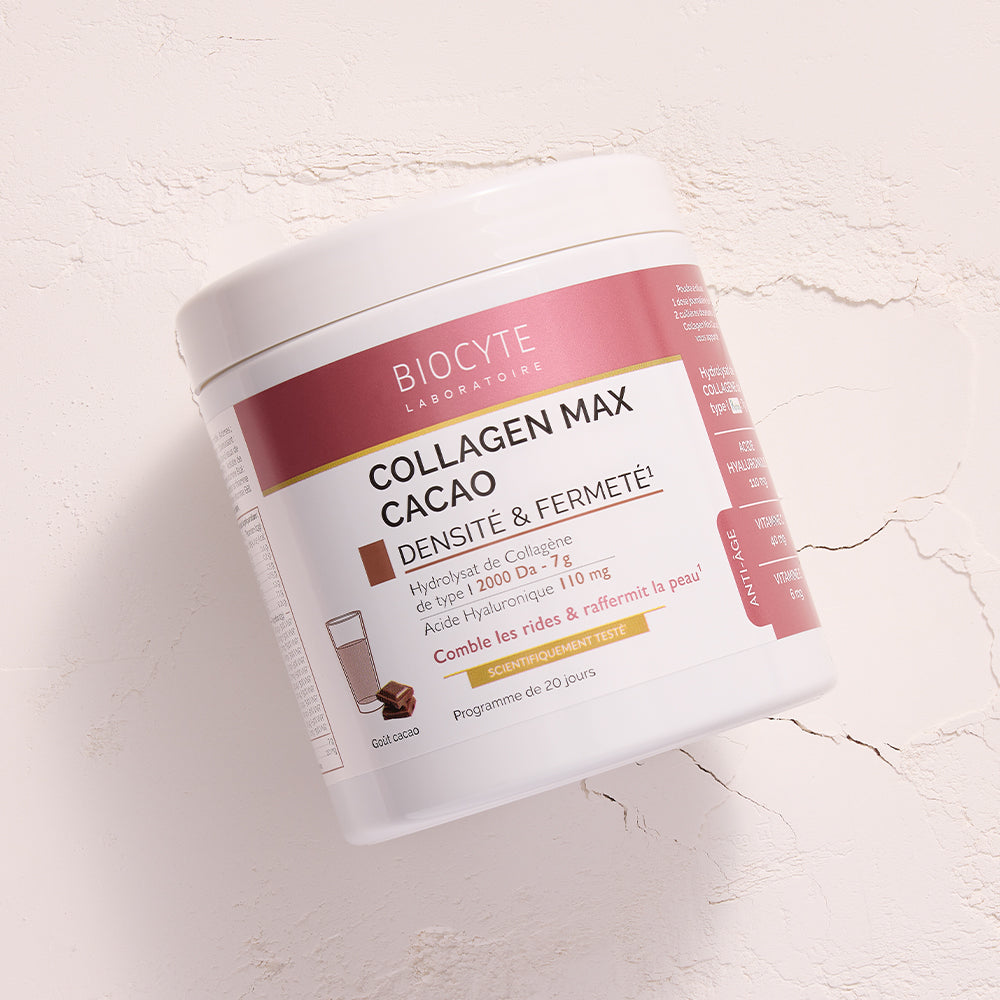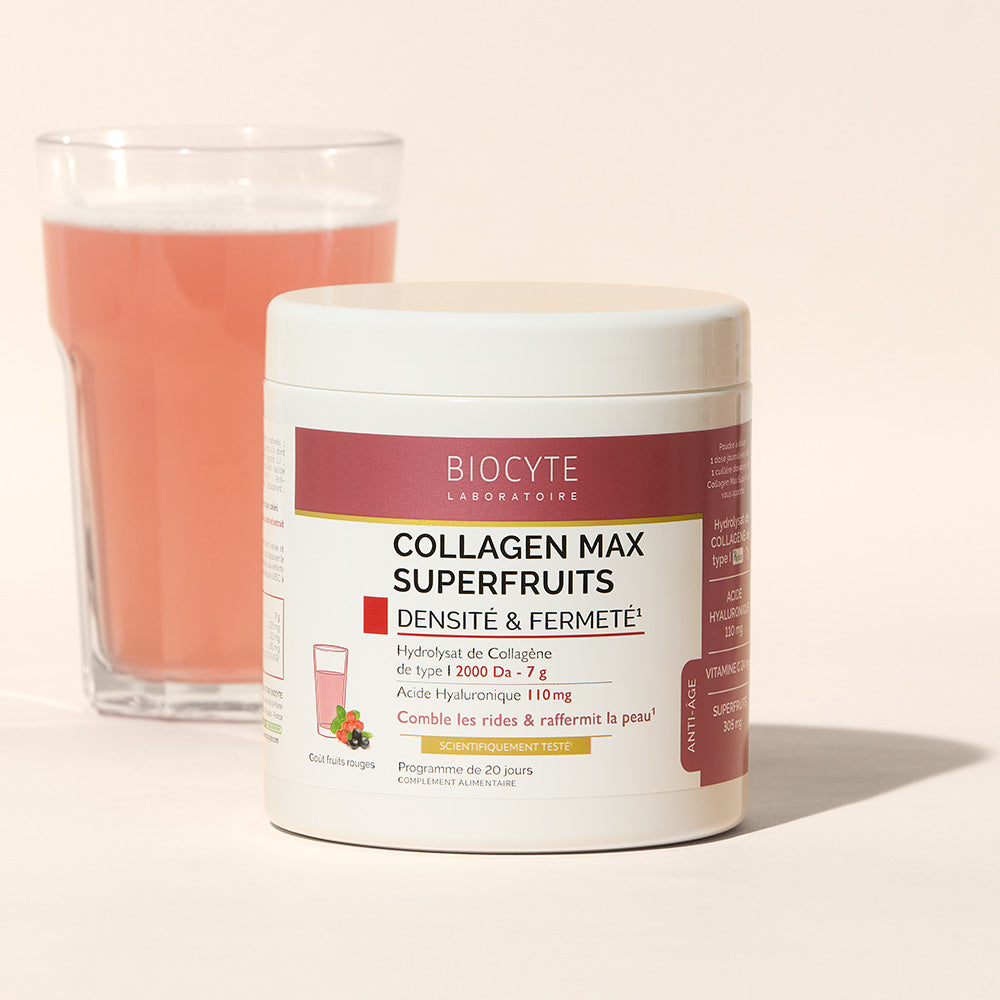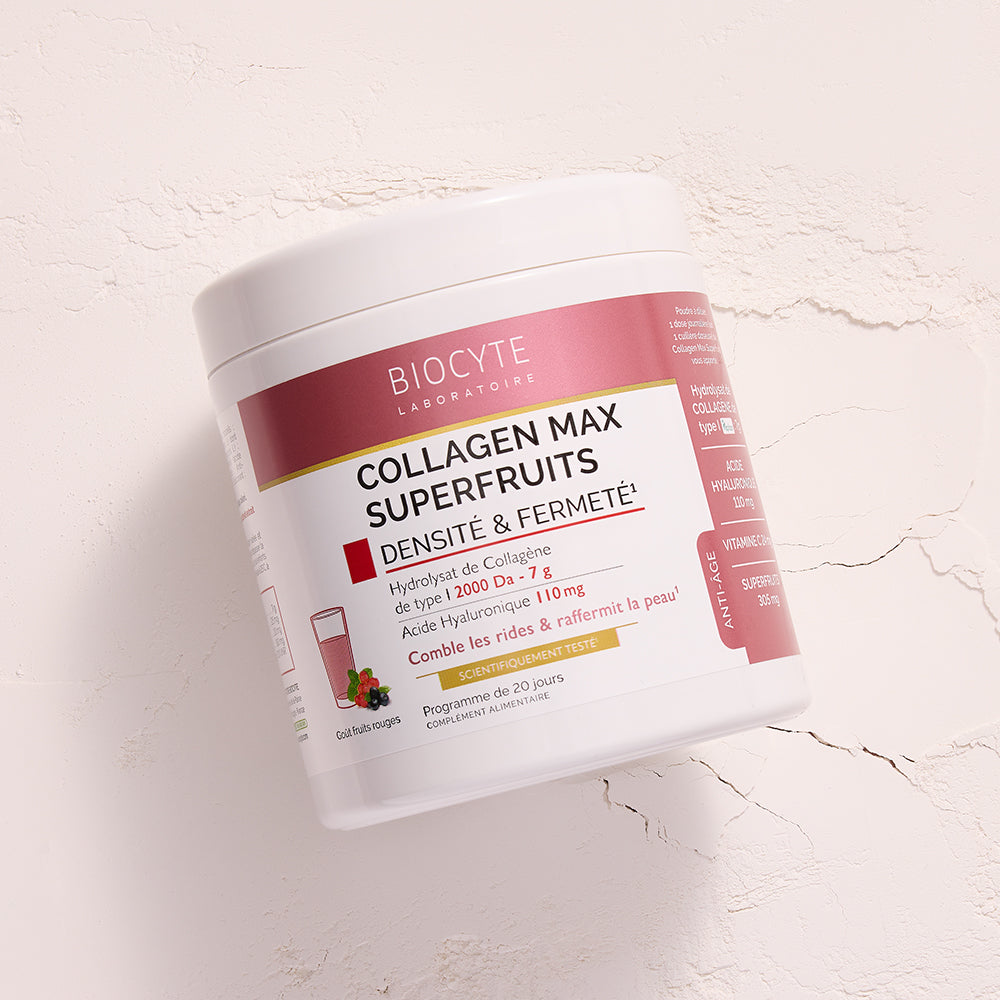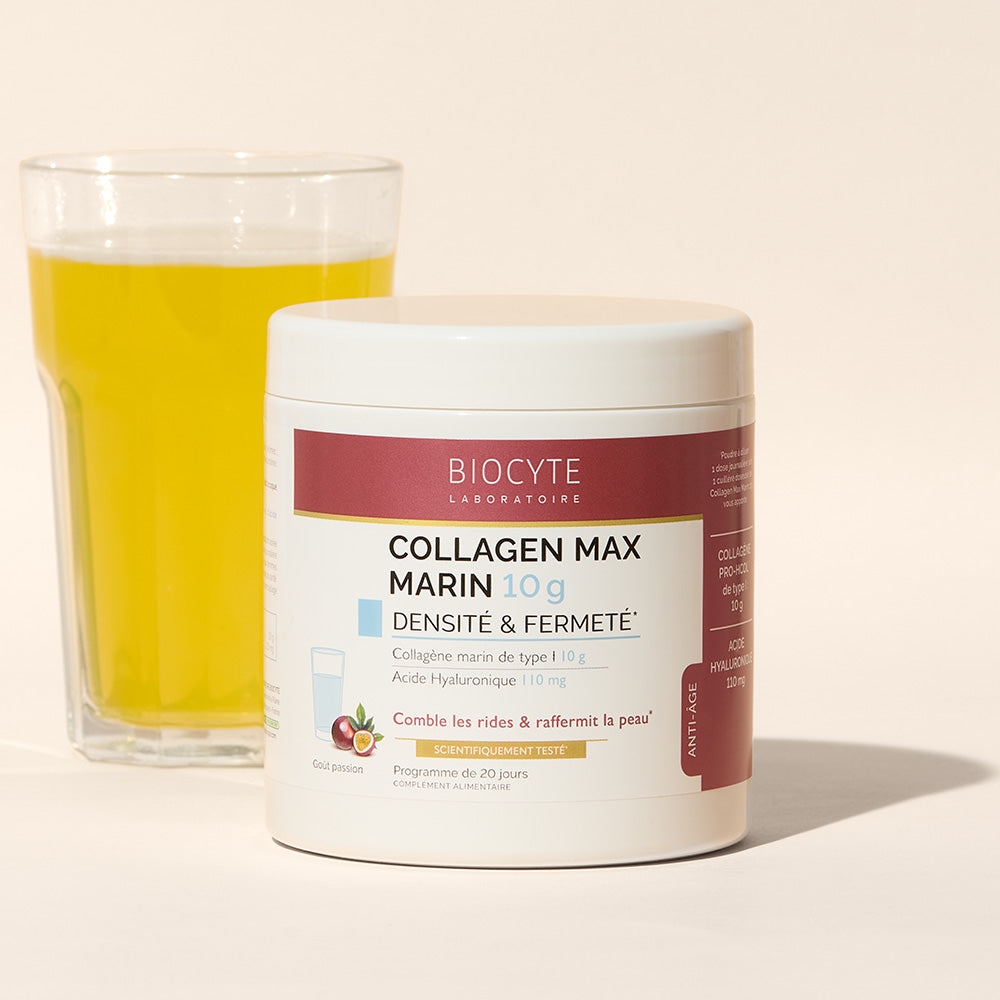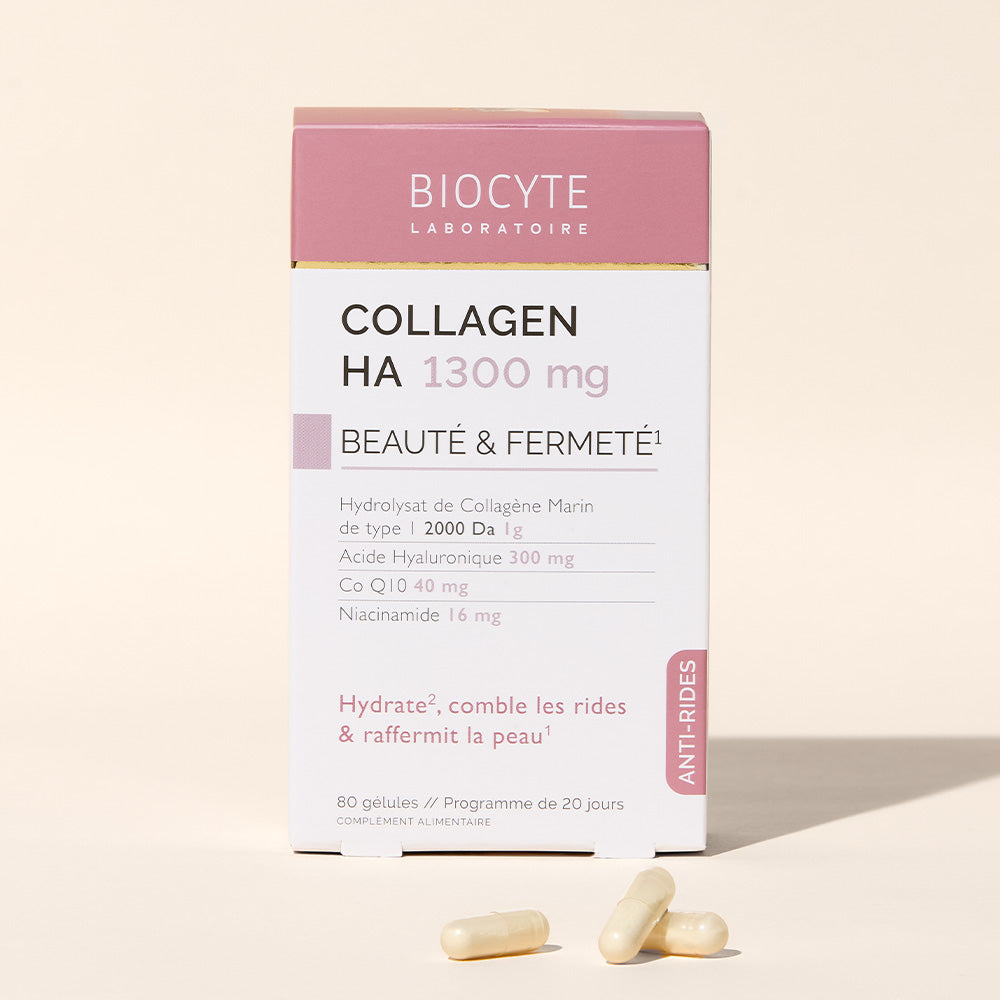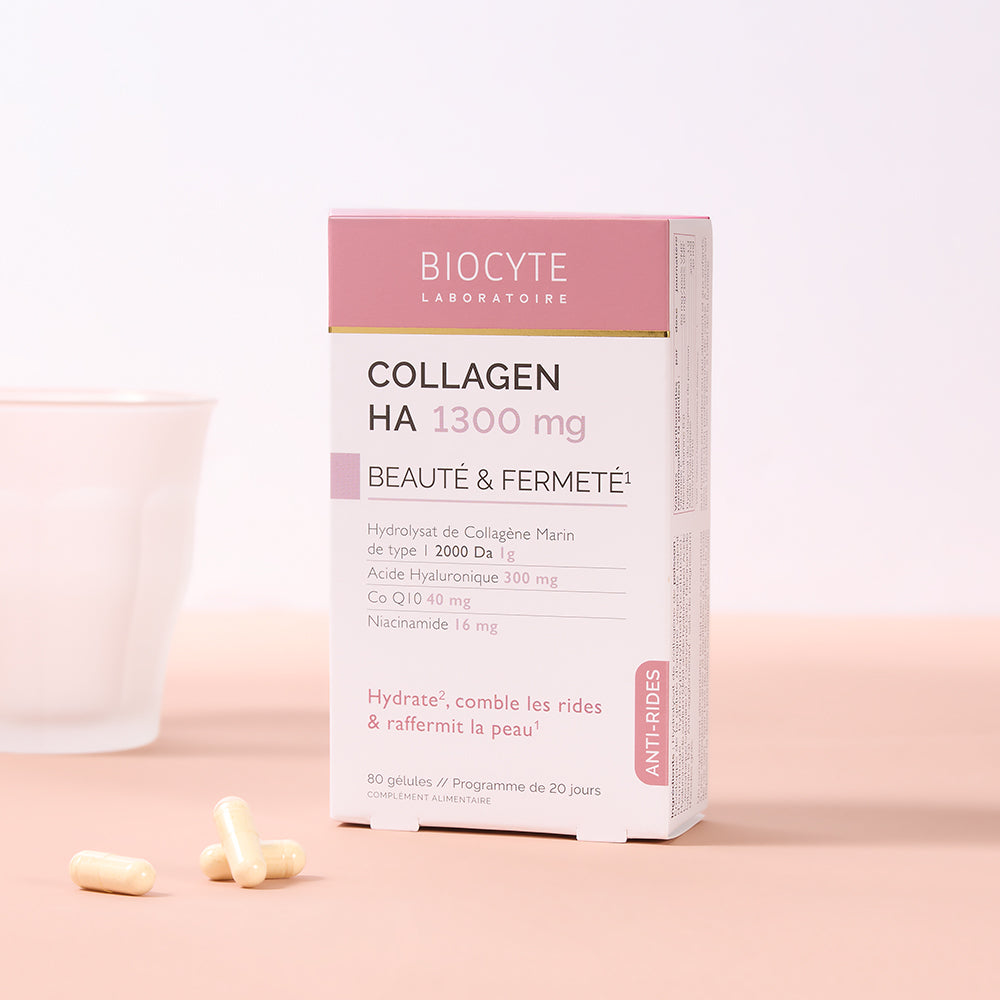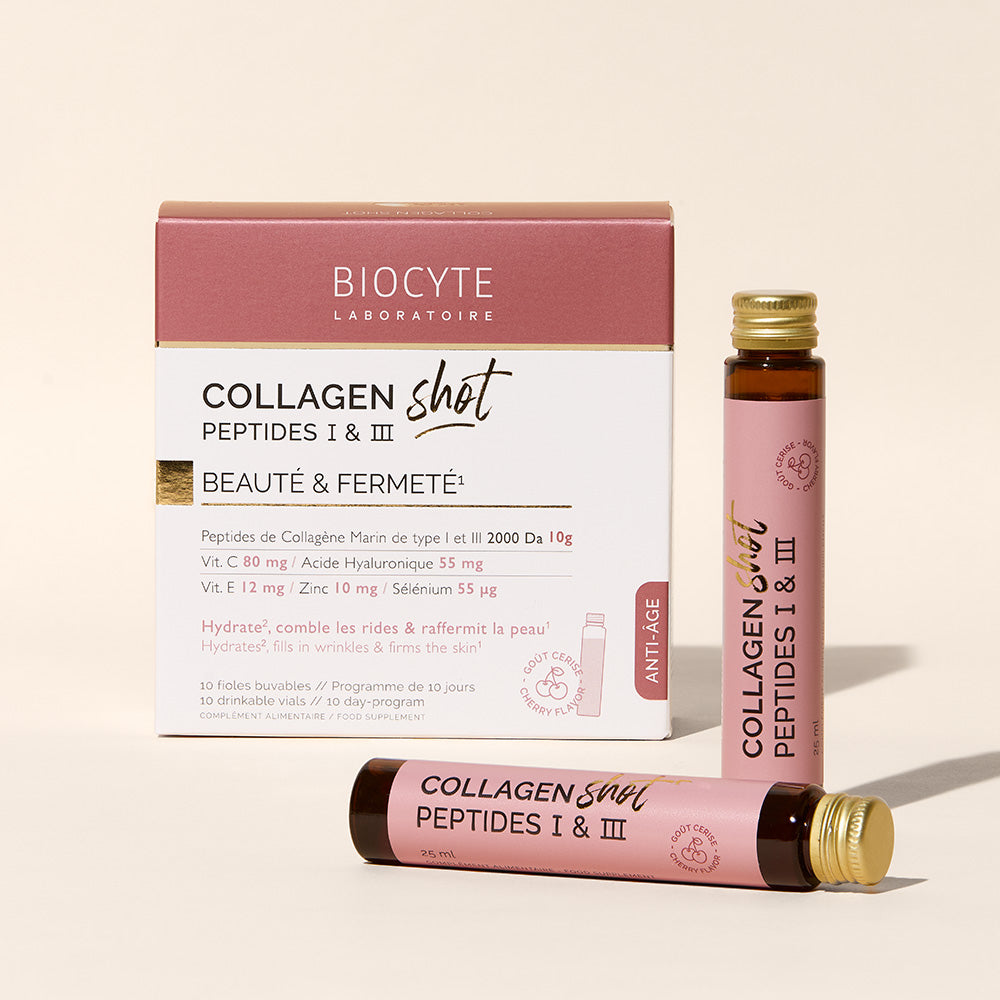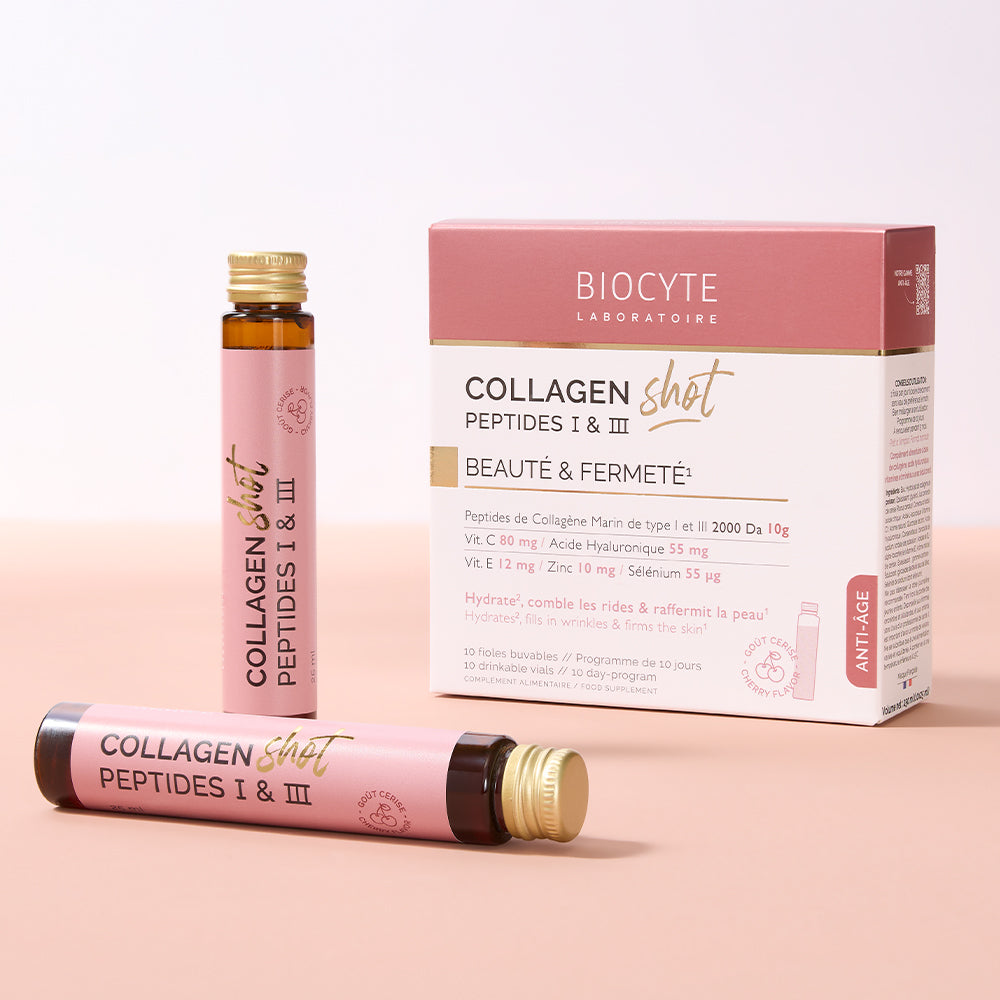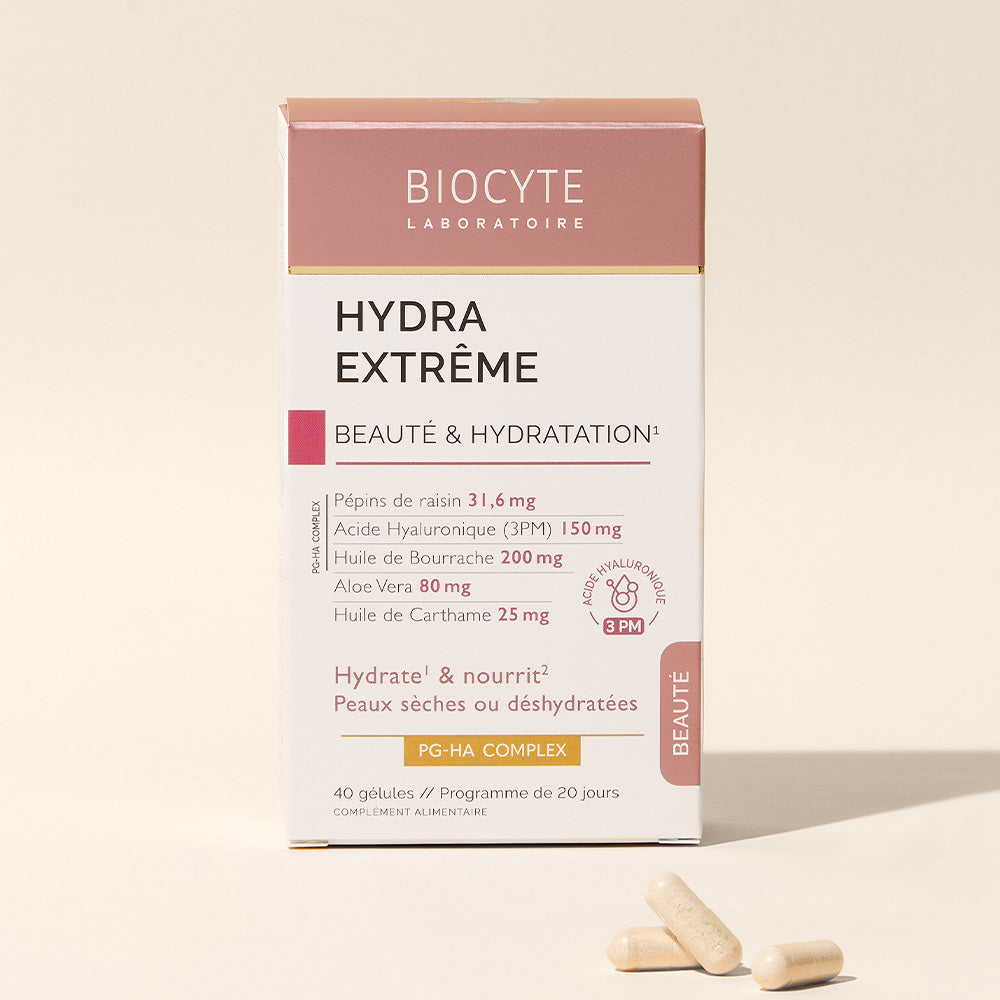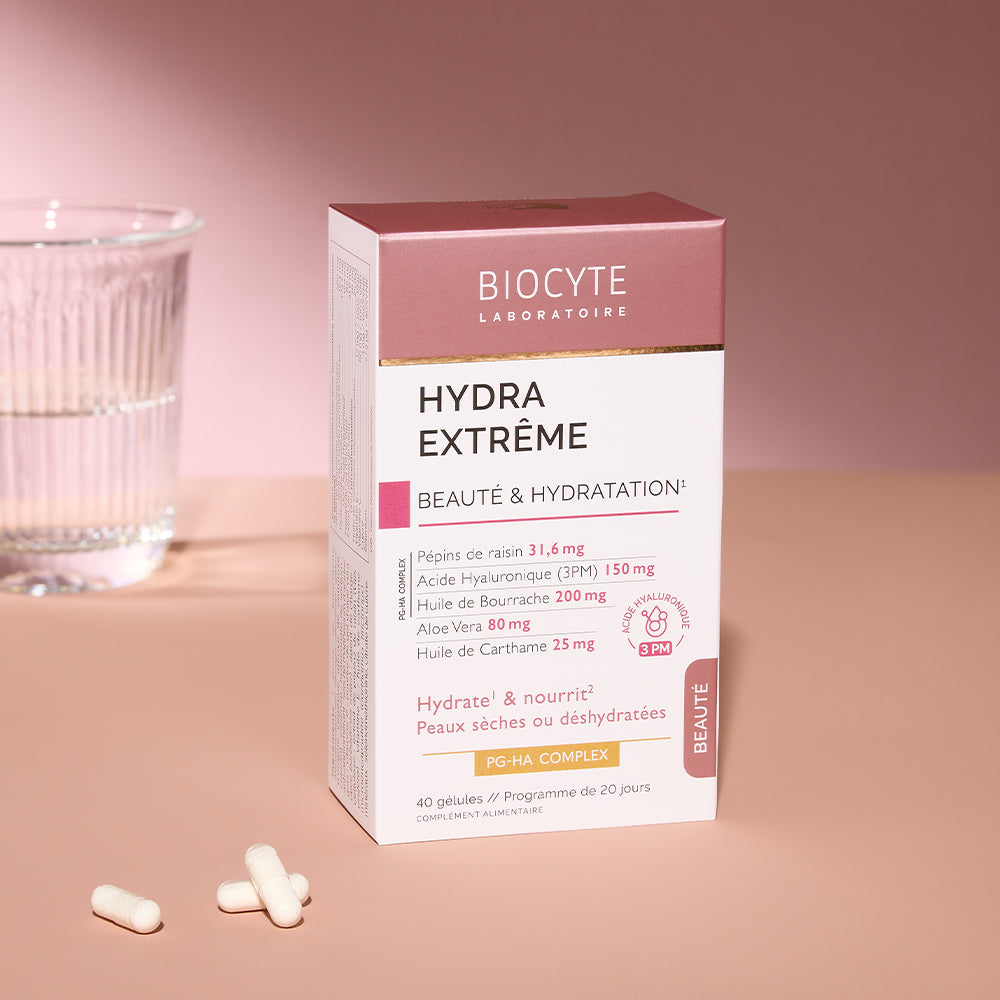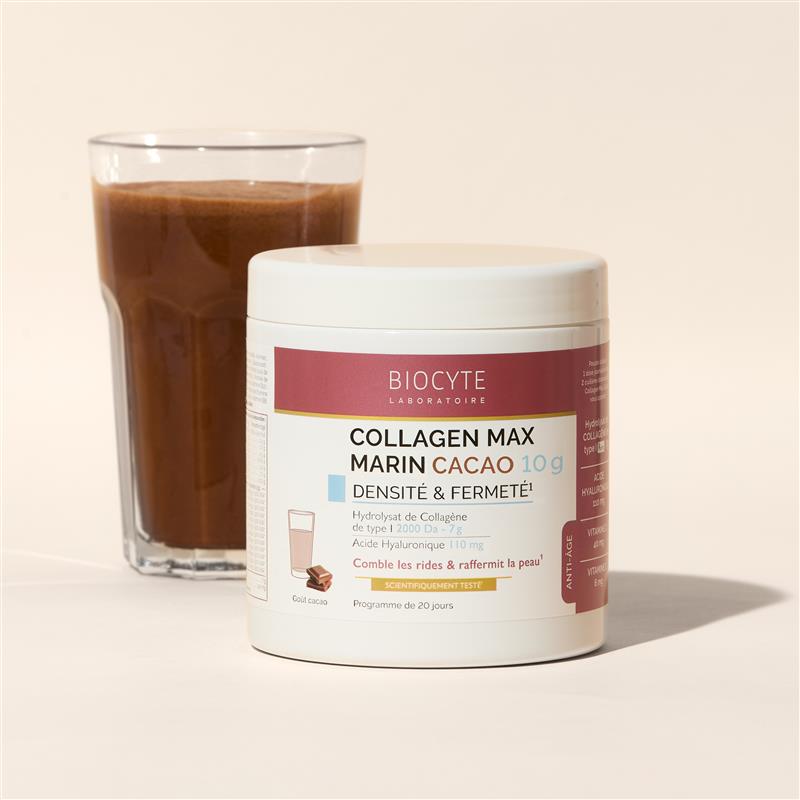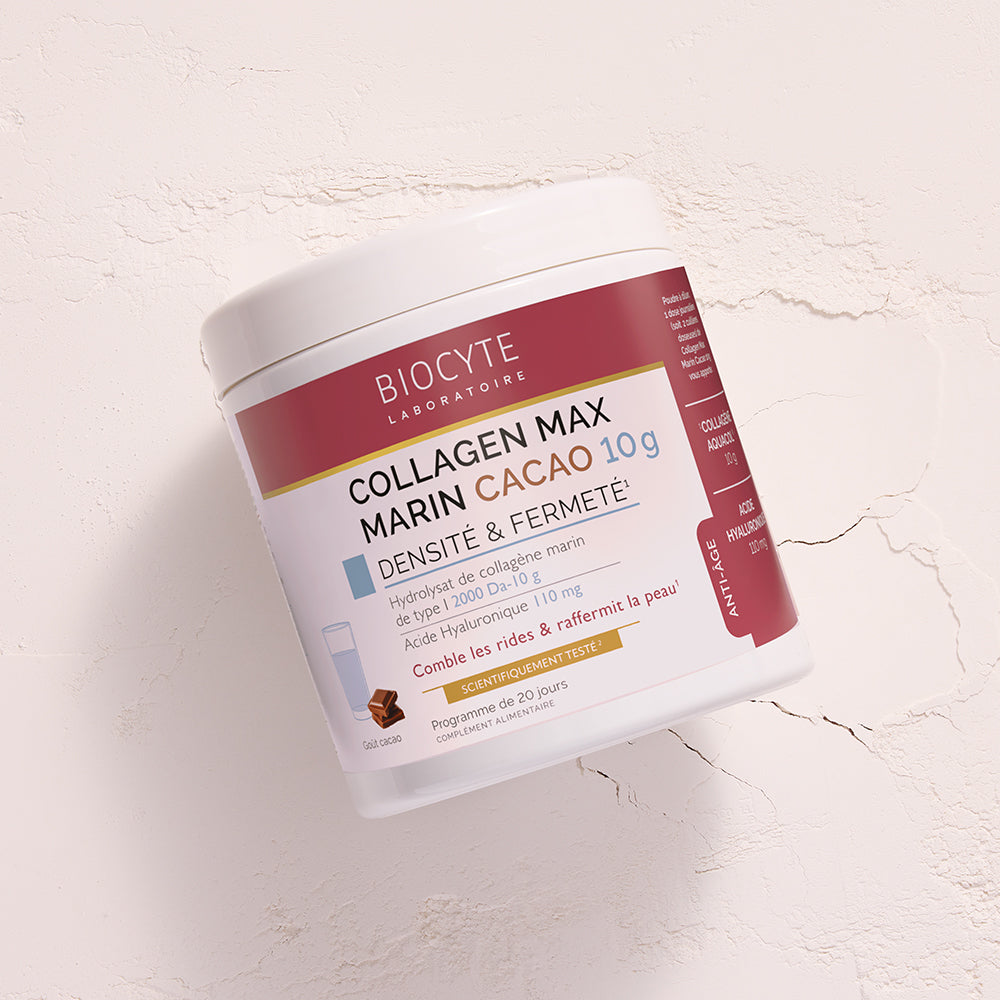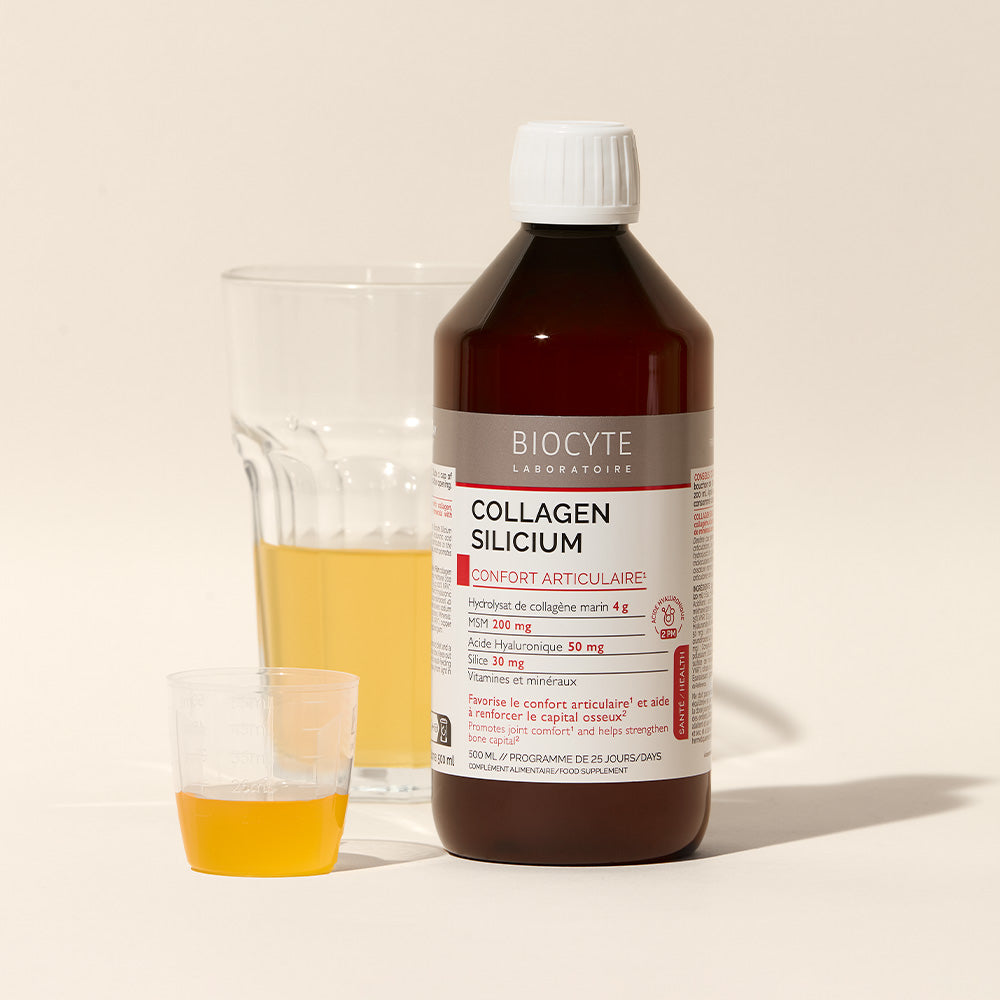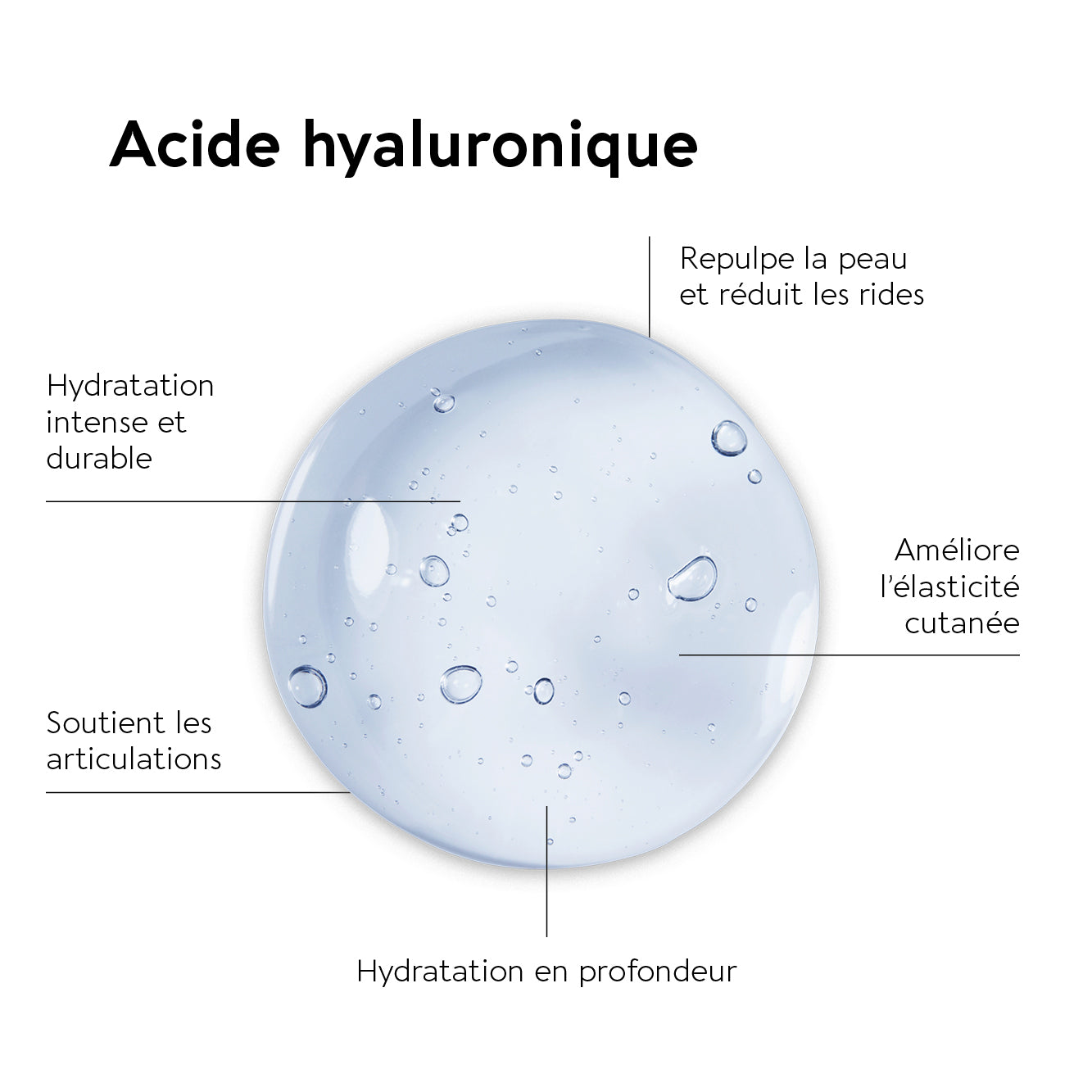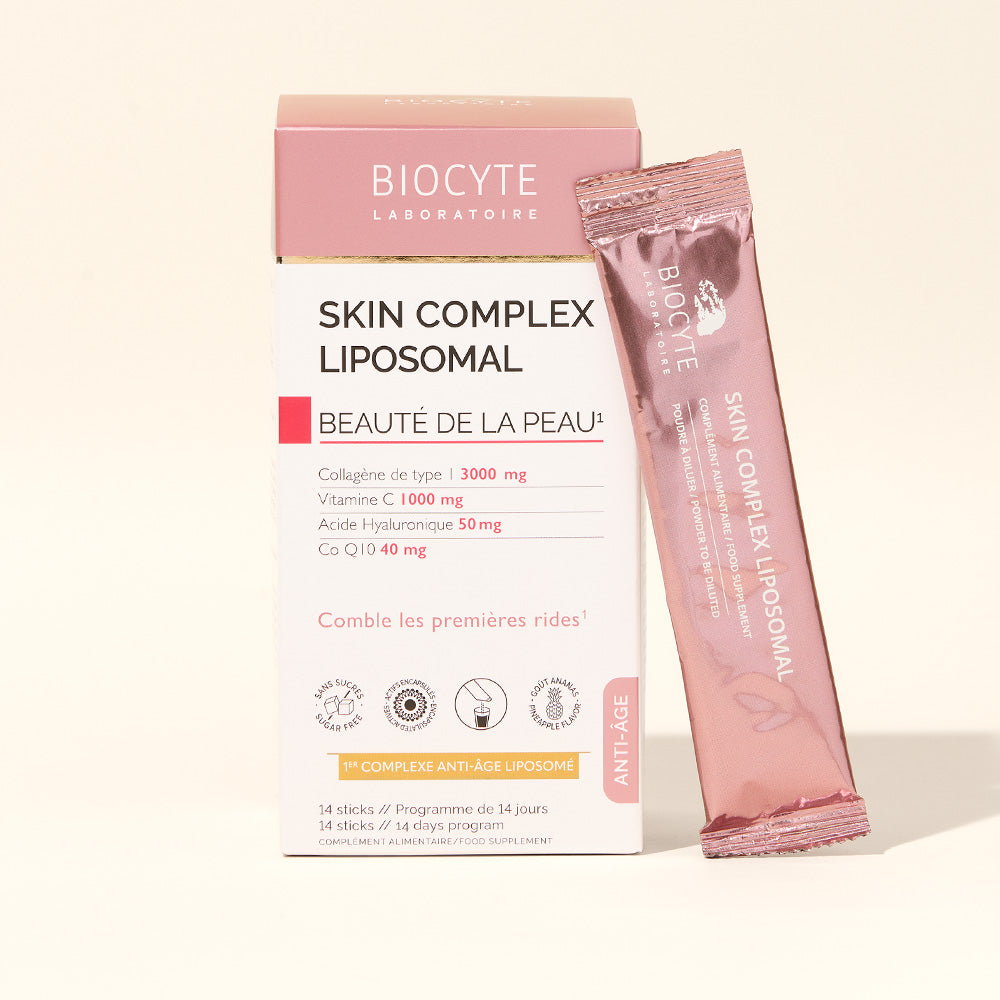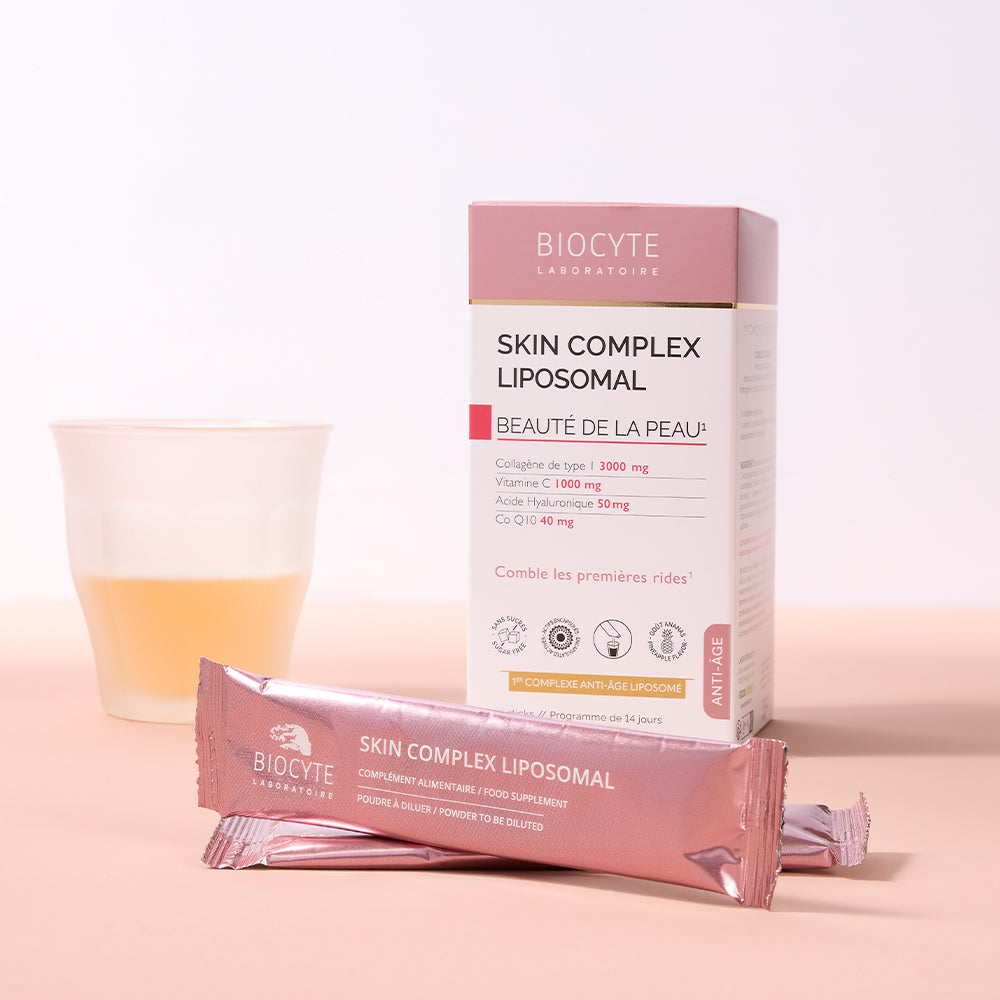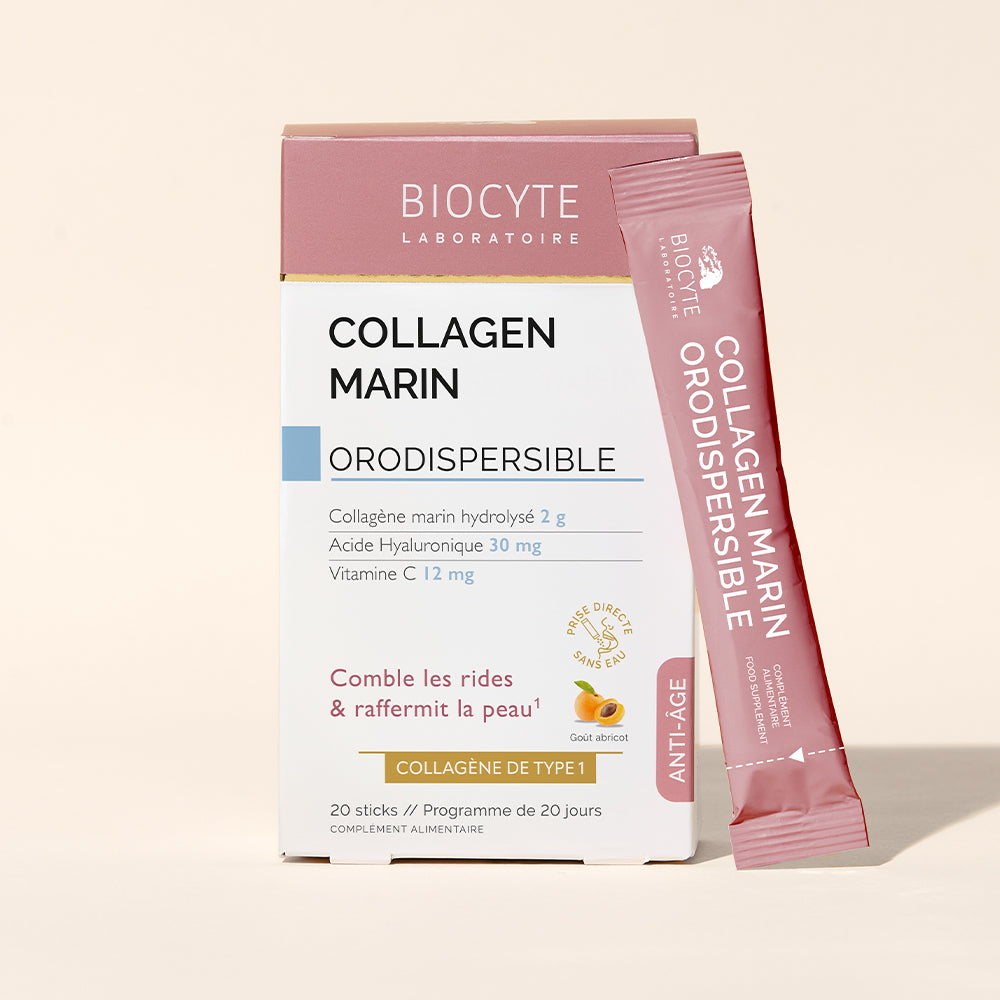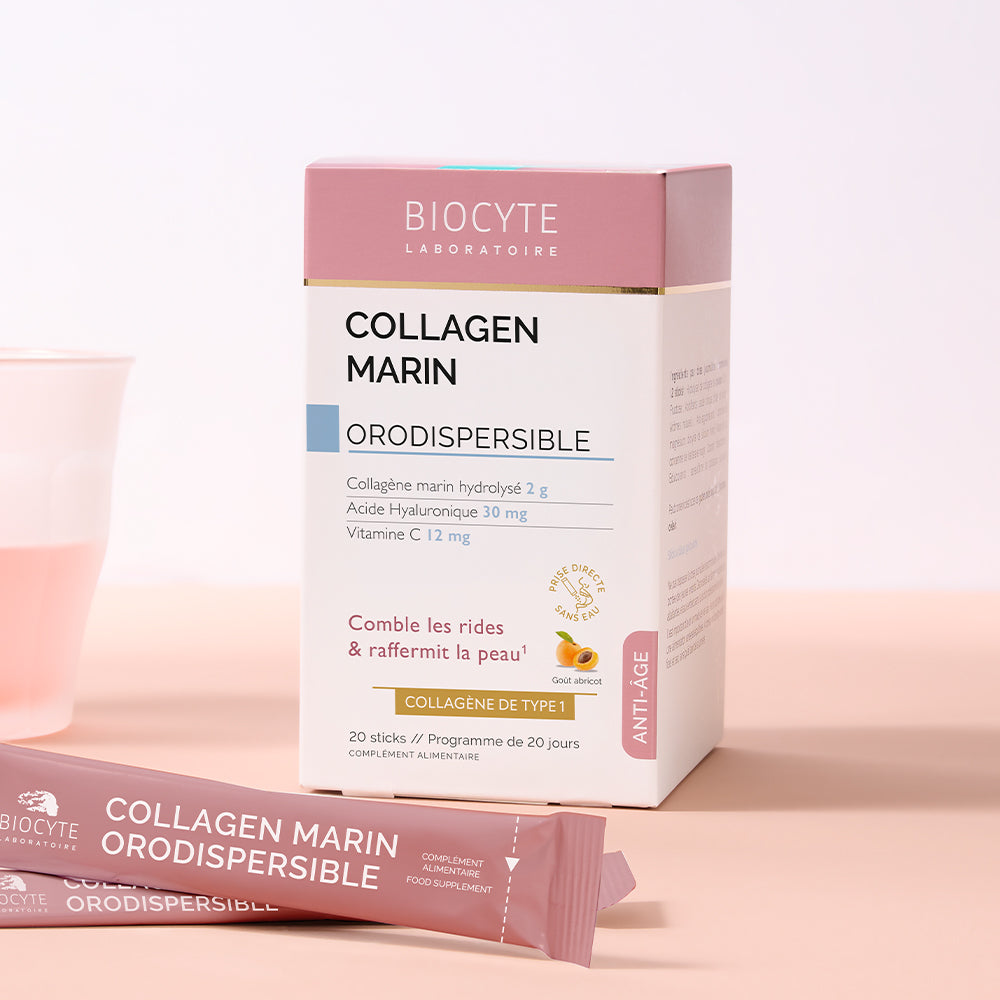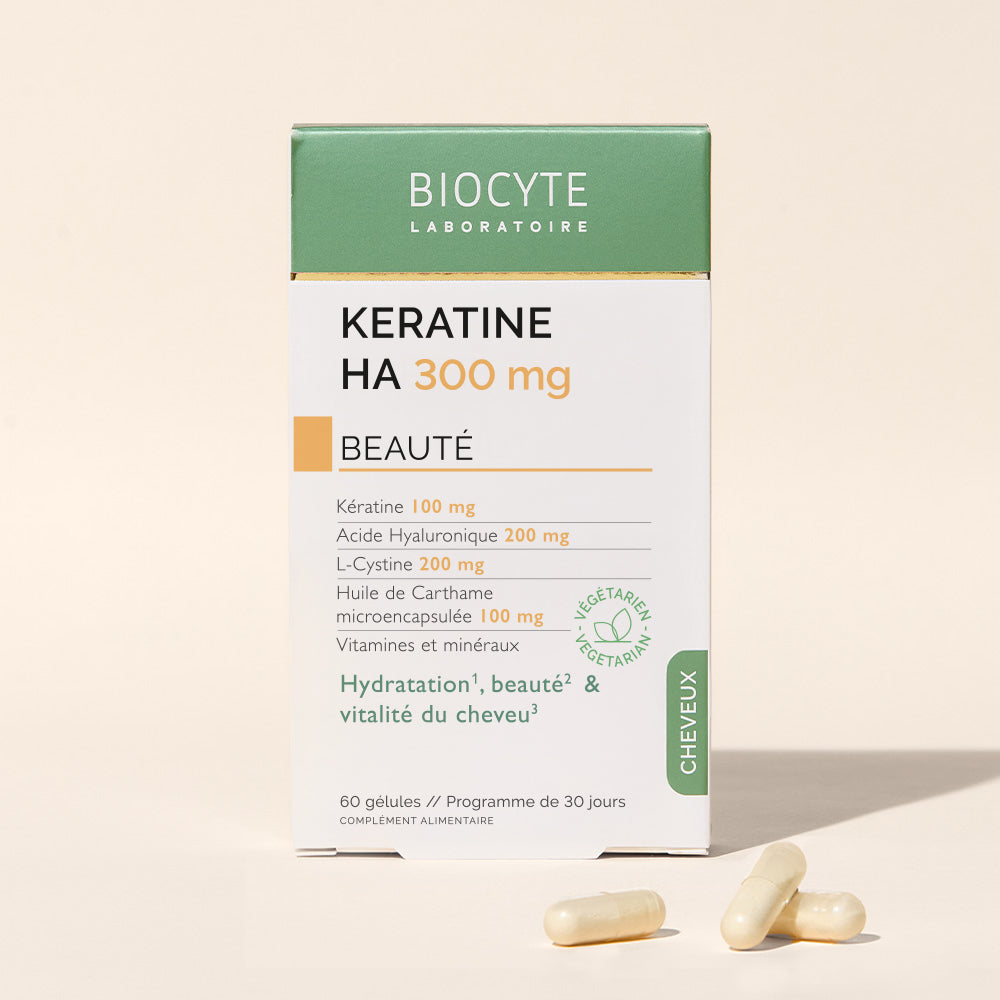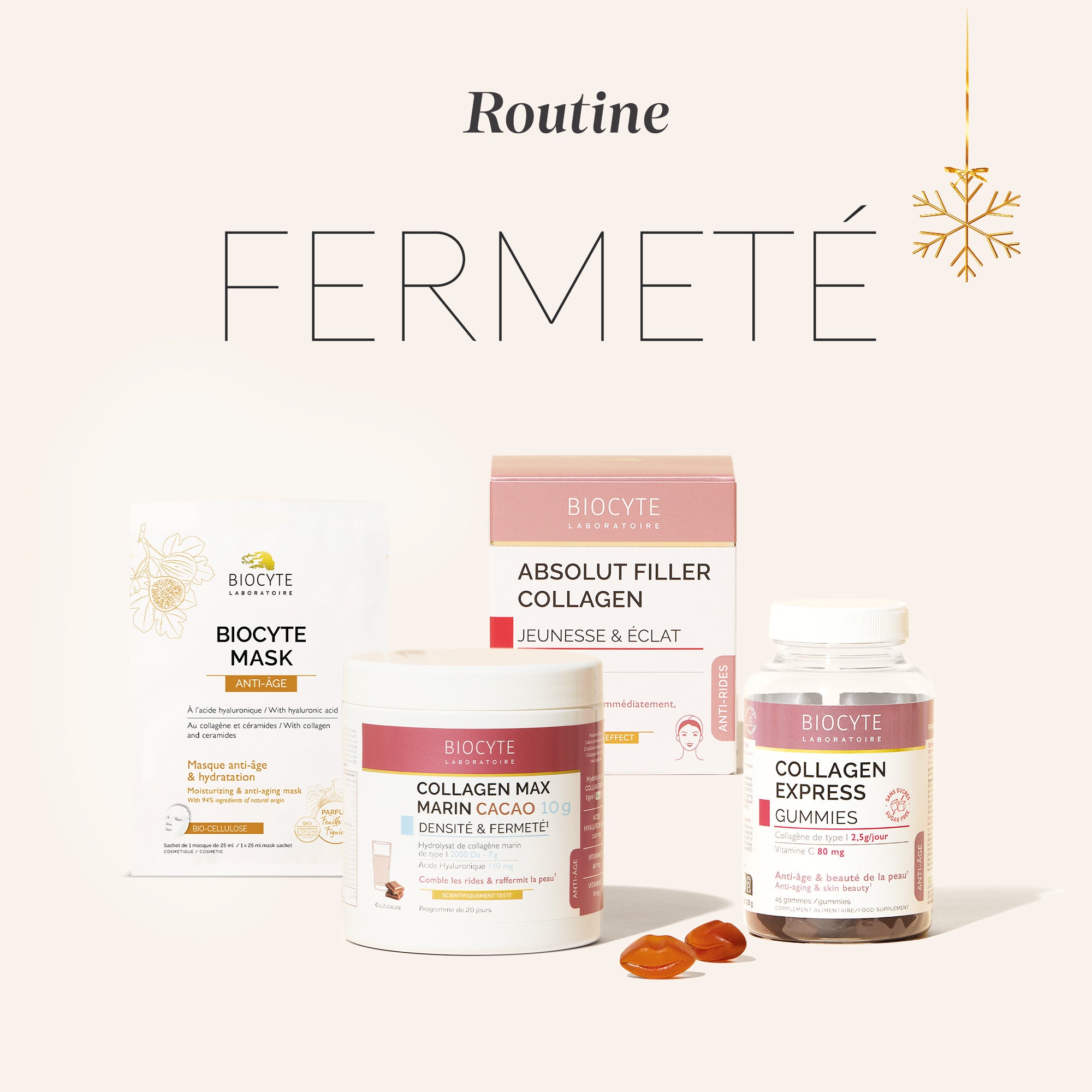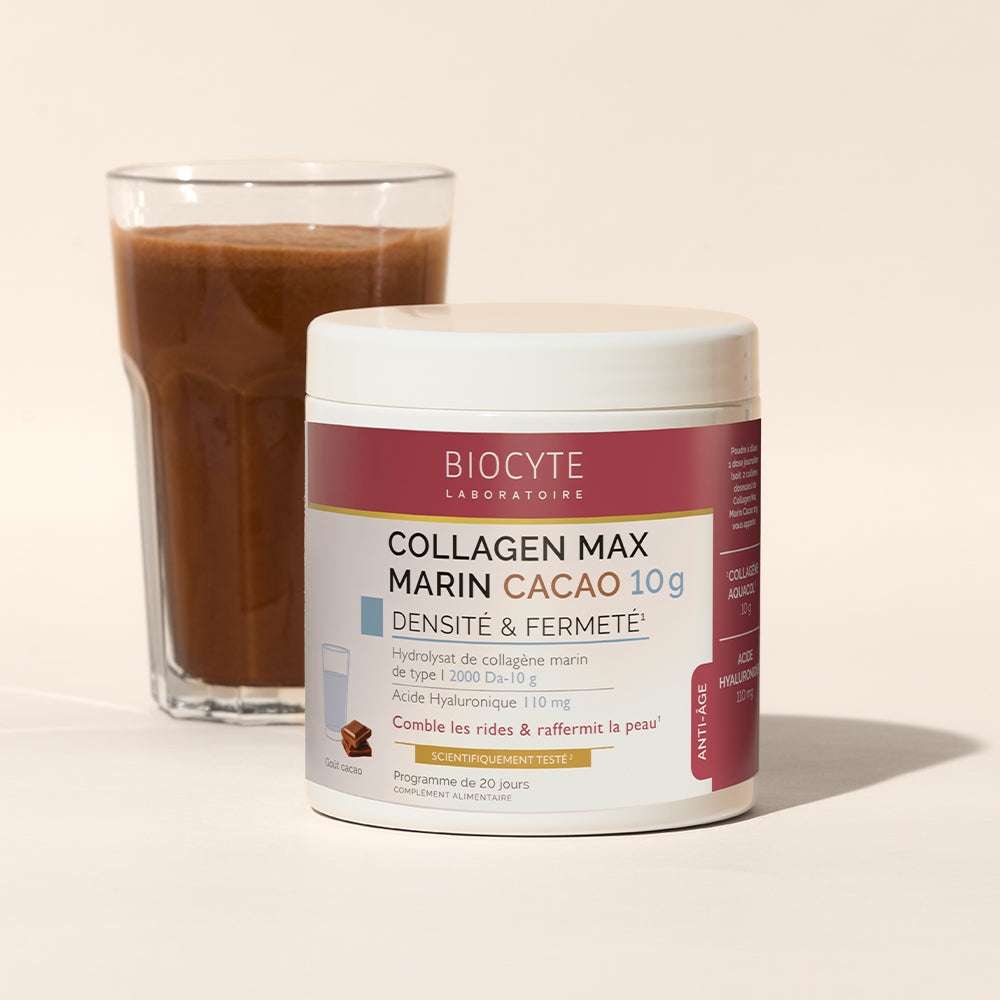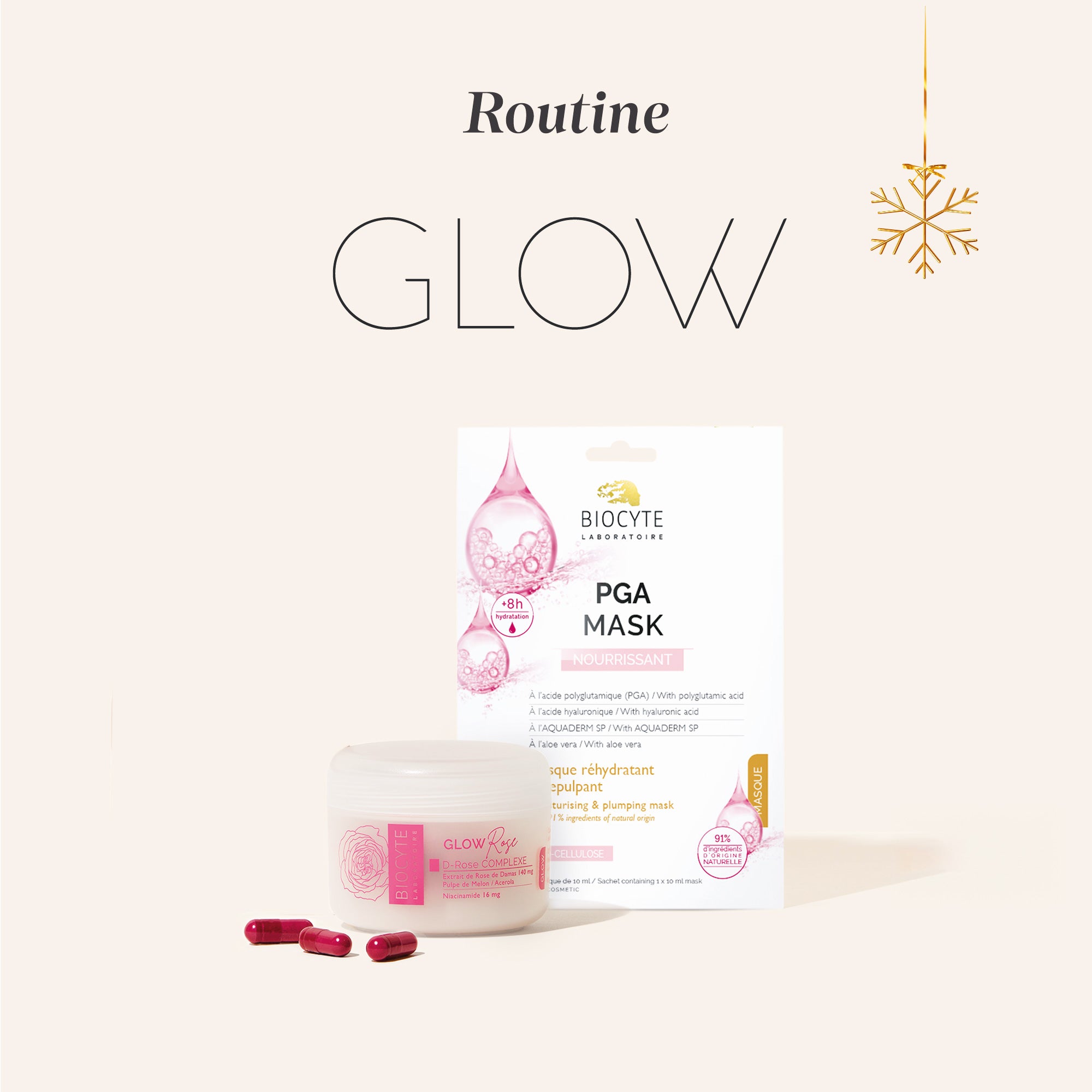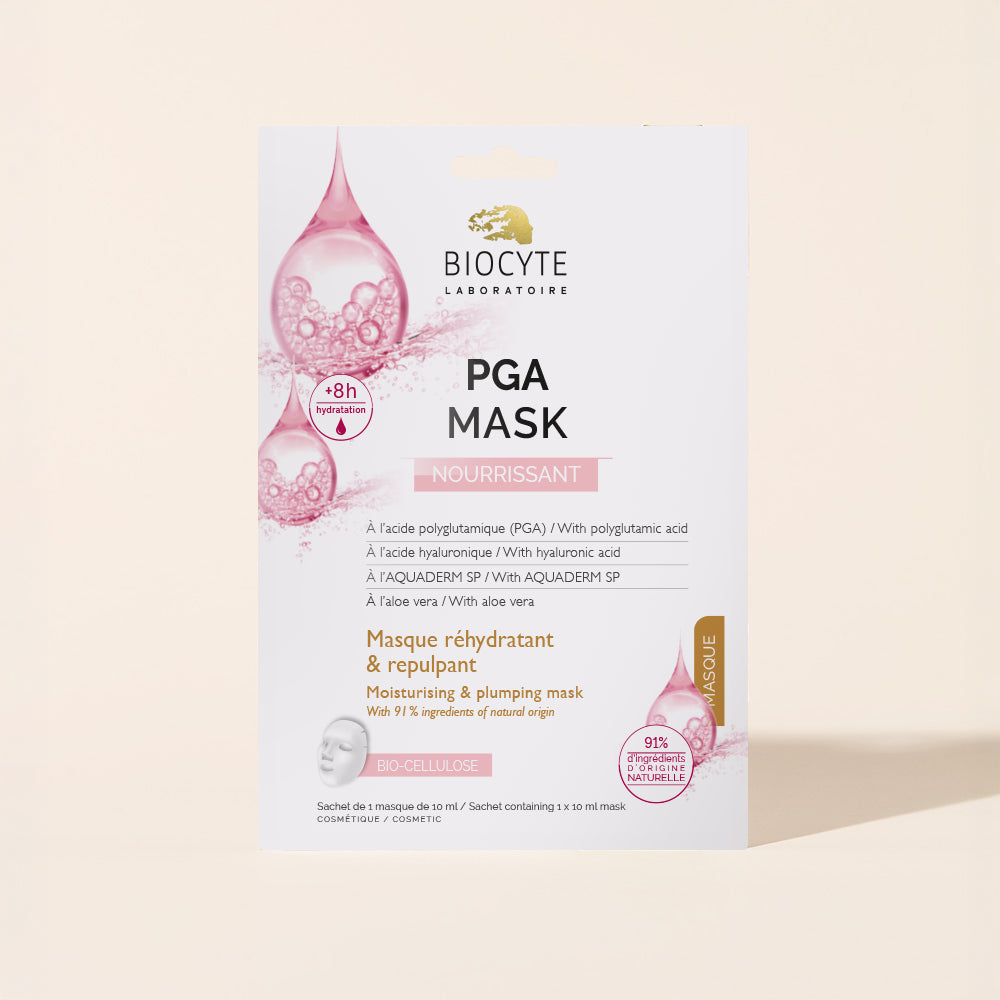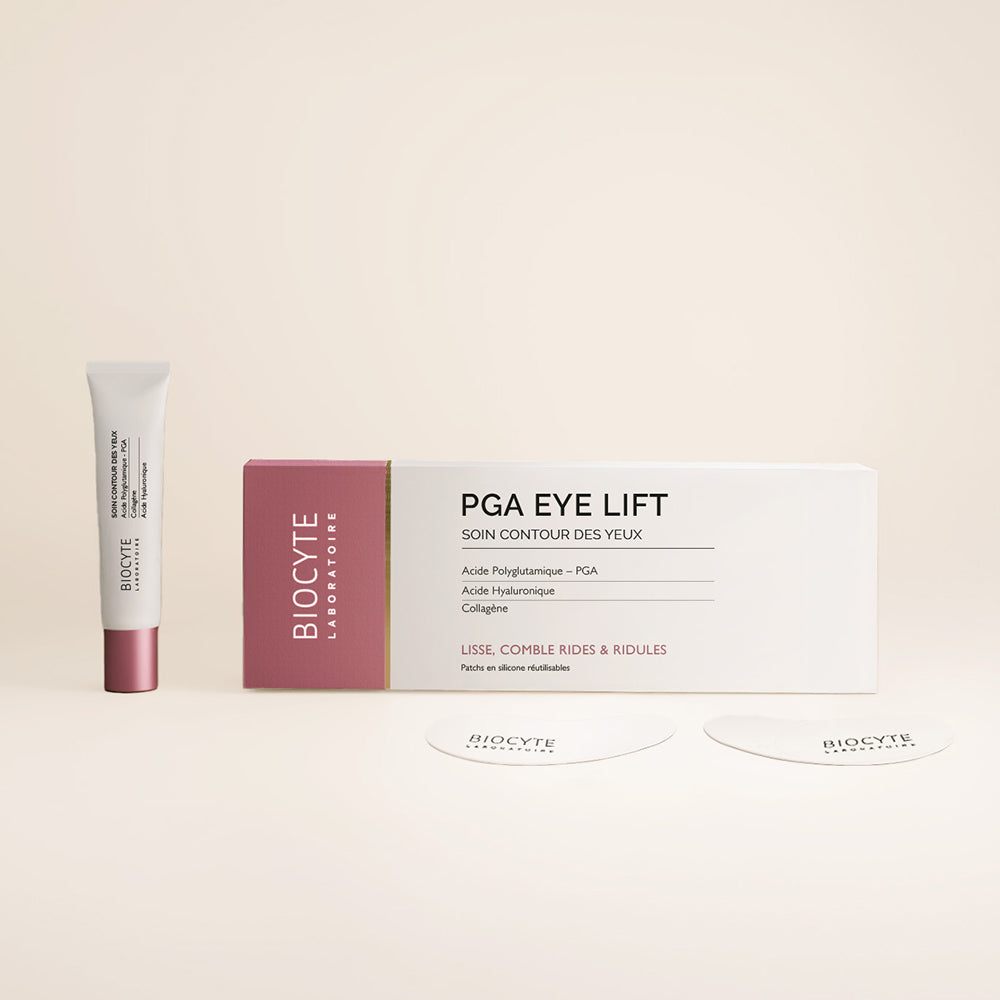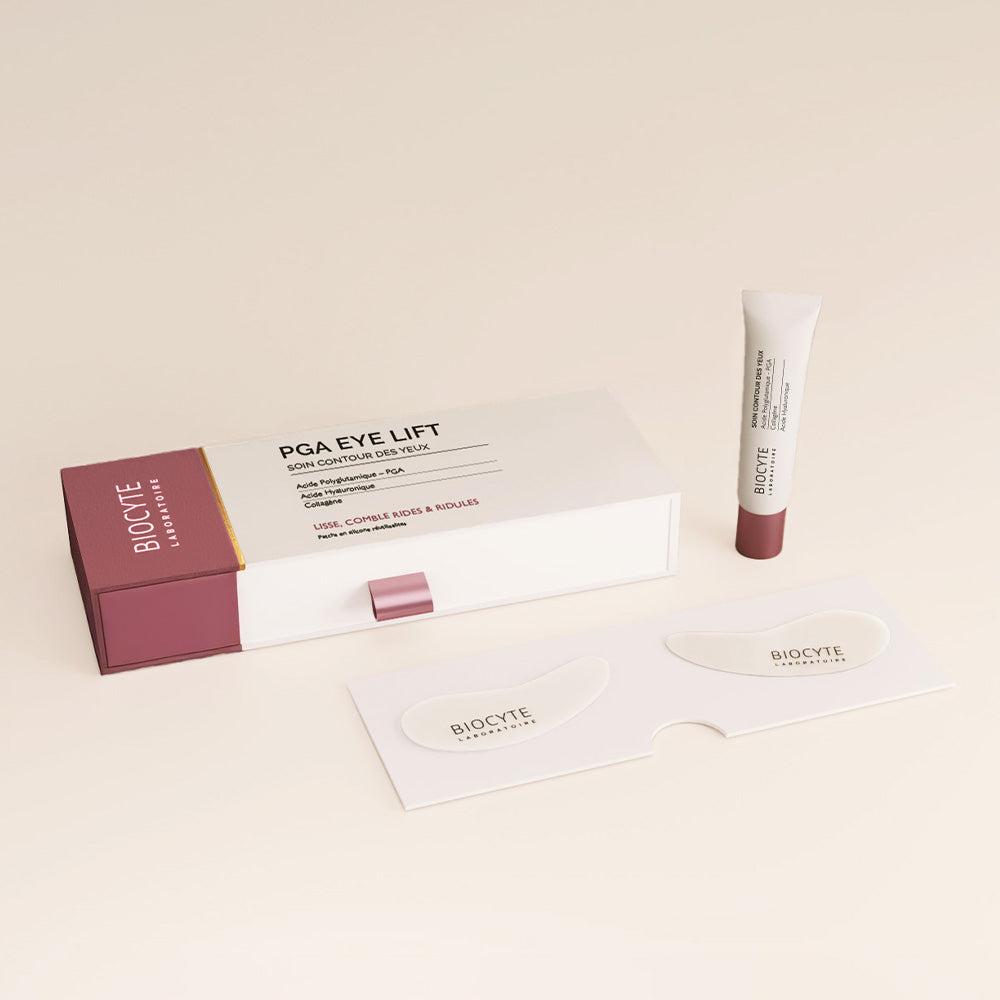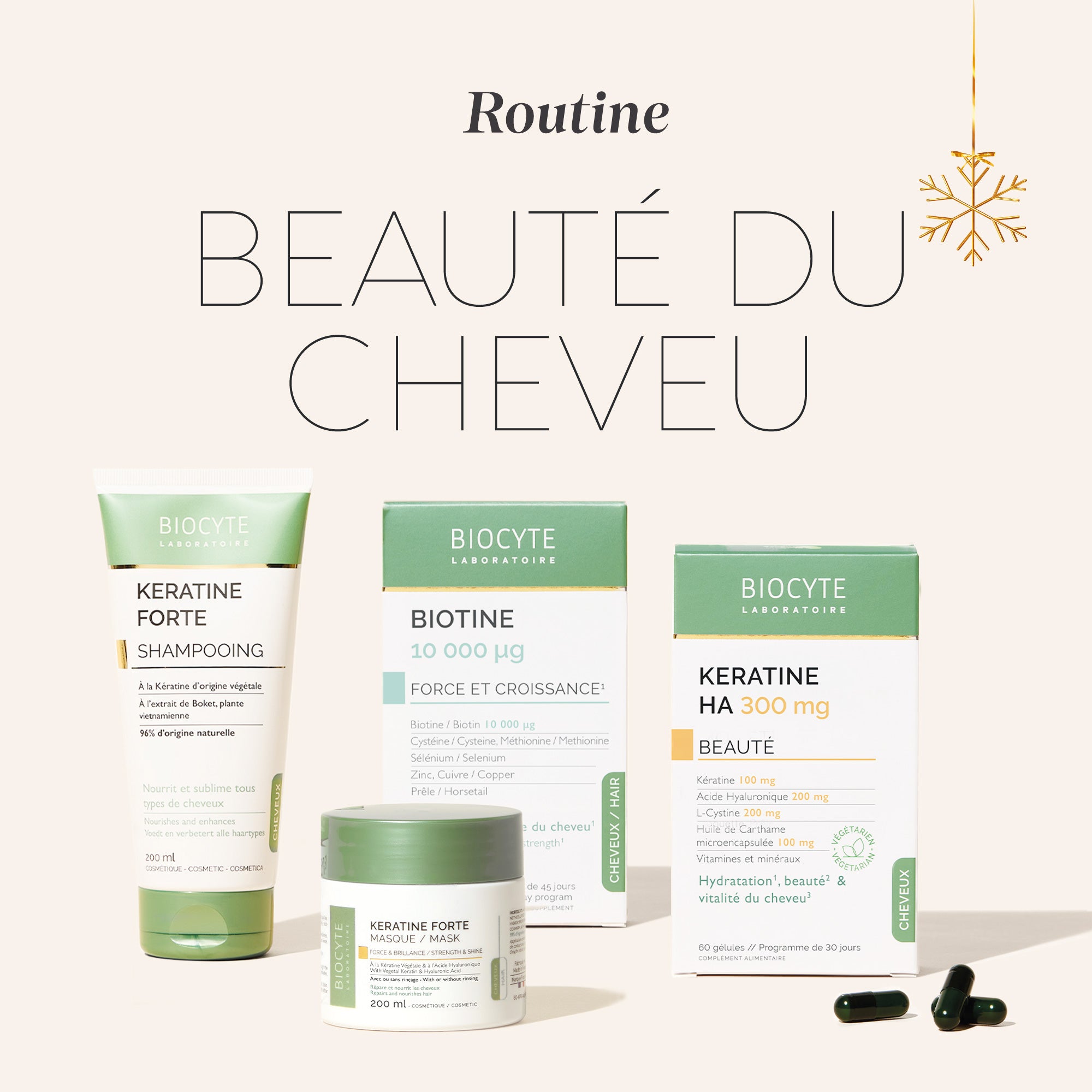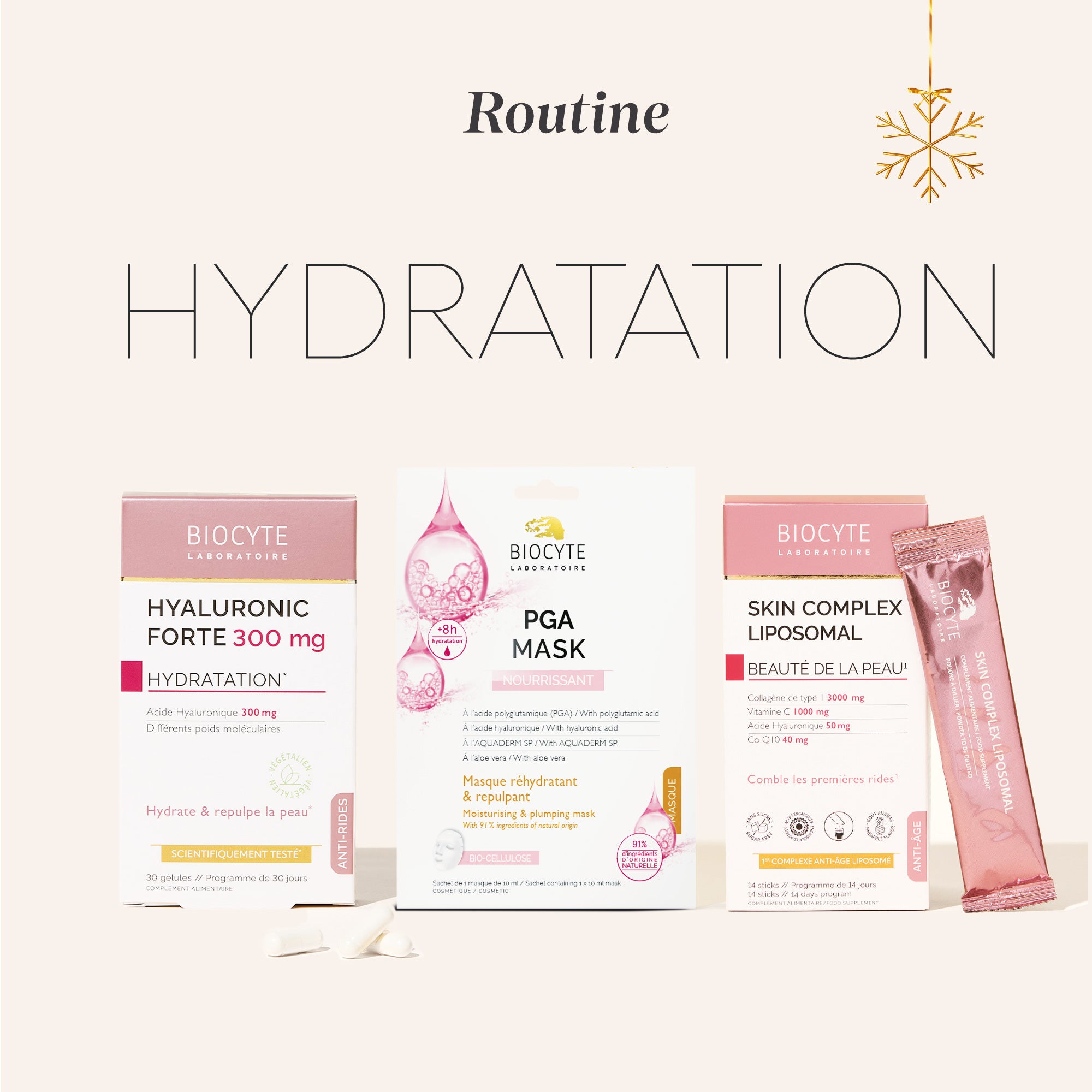What is hyaluronic acid?
Hyaluronic acid is a combination of several molecules, widely distributed in the joints and skin. Its structure gives it hydration and support properties for the skin's framework. More than 50% of the Hyaluronic Acid is found in the dermis of the skin. It forms a special fluid that hydrates the surrounding tissues. Hyaluronic acid is continuously secreted by specific connective tissue cells: fibroblasts. However, just like collagen production, hyaluronic acid production decreases with age. A supportive supply with the help of anti-aging food supplements with hyaluronic acid is recommended from the age of 25 to prevent the appearance of wrinkles and fine lines and dehydration of the skin.
Hyaluronic acid as a food supplement: acting on the first signs of aging
From the age of 25, the first signs of aging appear on our skin, particularly around the lips, around the eyes, and on the forehead and nasolabial folds. One of the main factors in volume loss and the appearance of wrinkles is dehydration. Indeed, the skin acts as a barrier to prevent foreign bodies from entering our body and helps prevent water loss. When water evaporates, the skin becomes hollow and wrinkles become visible. This phenomenon is accelerated by exposure to UV rays, pollution, or hormonal changes.
Skin Hydration: The Role of Hyaluronic Acid Supplements
Hyaluronic acid is one of the nutricosmetic active ingredients essential for keeping skin hydrated and for combating the appearance of signs of aging. Due to its hygroscopic structure and hydrophilic nature, i.e. its ability to bind to water molecules, hyaluronic acid improves skin hydration, giving it a plump appearance. Each molecule is capable of binding up to 1000 times its weight in water. By retaining water in our skin, hyaluronic acid helps maintain skin volume, despite the passage of time.
Nutricosmetics and hyaluronic acid: An effective synergy
Hyaluronic acid molecules ingested orally, through dietary supplements, will reach the intestine as they progress through the digestive tract. Once they reach the colon, they will be absorbed through the intestinal microvilli and enter the bloodstream. Finally, the hyaluronic acid molecules will be distributed through the bloodstream and act on the connective tissues of the epidermis.
For effective action against theskin aging, collagen and hyaluronic acid are often combined when taking anti-aging food supplements.
Discover our biocellulose masks
To support the action of nutricosmetics, Biocyte offers a range of cosmetics containing hyaluronic acid in the form of biocellulose face masks. Biocellulose is a fiber that is 100% biocompatible with the skin, giving it a second-skin effect. Hyaluronic acid acts on the epidermis to plump the skin and preserve the elasticity of facial skin.
There is a full range of supplements to rejuvenate your face developed by scientific experts
Opt for a full-spectrum facial care range
Hyaluronic acid comes in different molecular weights: low, medium, and high. Combining all molecular weights provides a comprehensive and complete action. The different sizes of the molecule will modulate the more or less rapid assimilation of hyaluronic acid.
• Low molecular weight hyaluronic acid (LWH) 50 to 100 kDaltons results in rapid assimilation of the molecule
• Medium molecular weight (MW) Hyaluronic acid: 500 to 1000 kDaltons leads to the progressive assimilation of the molecule and boosts the endogenous production of Hyaluronic Acid.
Hyaluronic forte® 300 mg contains molecules of all three molecular weights and offers scientifically proven results of up to -21% wrinkle depth (1). By working with a broad spectrum of hyaluronic acid, it is possible to obtain all shapes and sizes of molecules to ensure prolonged distribution in the tissues. Small molecules will be diffused directly to the tissues while larger ones can be degraded by intestinal enzymes and release small chains successively.
(1) Scientific study carried out on the active ingredient sodium hyaluronate by Farcoderm on 15 women, 5 of whom received the placebo.
How is the hyaluronic acid in Biocyte products obtained?
The hyaluronic acid in Biocyte food supplements is obtained by fermentation from corn peptides. After fermentation, purification, and precipitation processes, we obtain hyaluronic acid powder containing different molecular weights.
Assimilation and bioavailability of hyaluronic acid in food supplements
There's a lot of talk about the effectiveness of hyaluronic acid, but what's just as crucial is how our bodies absorb this nutrient. When it comes to dietary supplements, bioavailability is a determining factor. It refers to the fraction of the ingested nutrient that is actually absorbed and used by the body.
There are also hair and nail supplements containing hyaluronic acid specially formulated to nourish hair. Enriched with hyaluronic acid and keratin, these products are designed to support hair hydration and health. Hyaluronic acid, known for its moisturizing properties, works deep down to maintain the hair's moisture balance, leaving it soft, shiny, and full of vitality. With a range of anti-hair loss supplements, you can regain lush, full-bodied hair.
Sources:
Papakonstantinou, E., Roth, M., & Karakiulakis, G. (2012). “Hyaluronic acid: A key molecule in skin aging”. Dermato-endocrinology, 4(3), 253-258. Link to publication
Kawada, C., Yoshida, T., Yoshida, H., Matsuoka, R., Sakamoto, W., Odanaka, W., ... & Urushibata, O. (2014). “Ingested hyaluronan moisturizes dry skin”. Nutrition journal, 13(1), 1-7. Link to publication
Jegasothy, S.M., Zabolotniaia, V., & Bielfeldt, S. (2014). "Efficacy of a New Topical Nano-hyaluronic Acid in Humans". The Journal of clinical and aesthetic dermatology, 7(3), 27. Link to the publication



